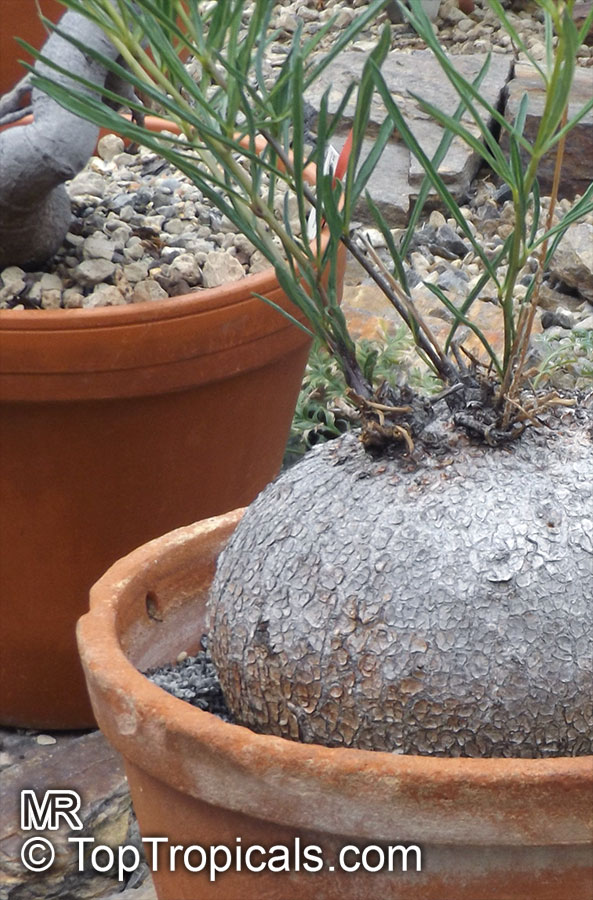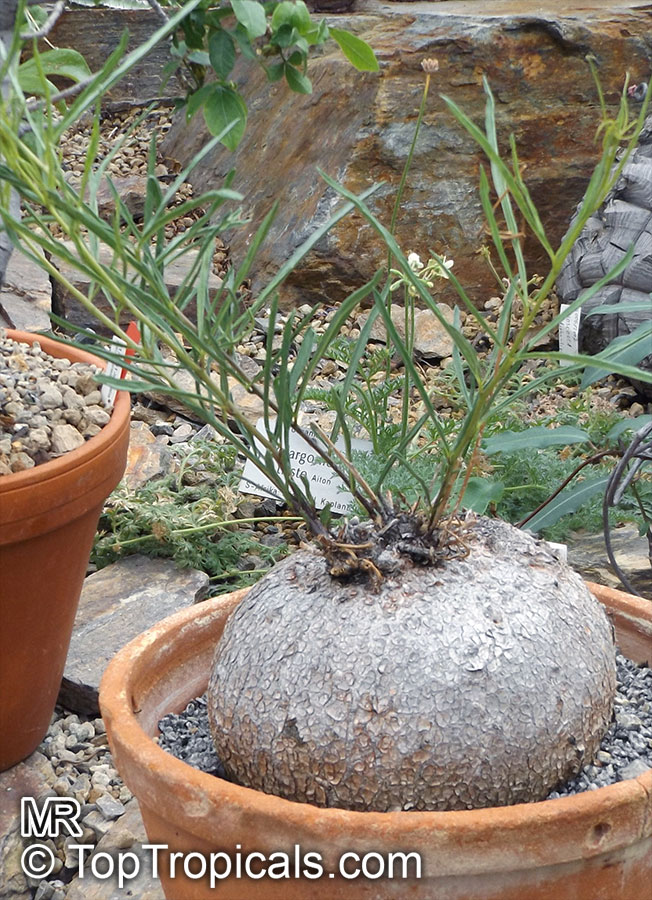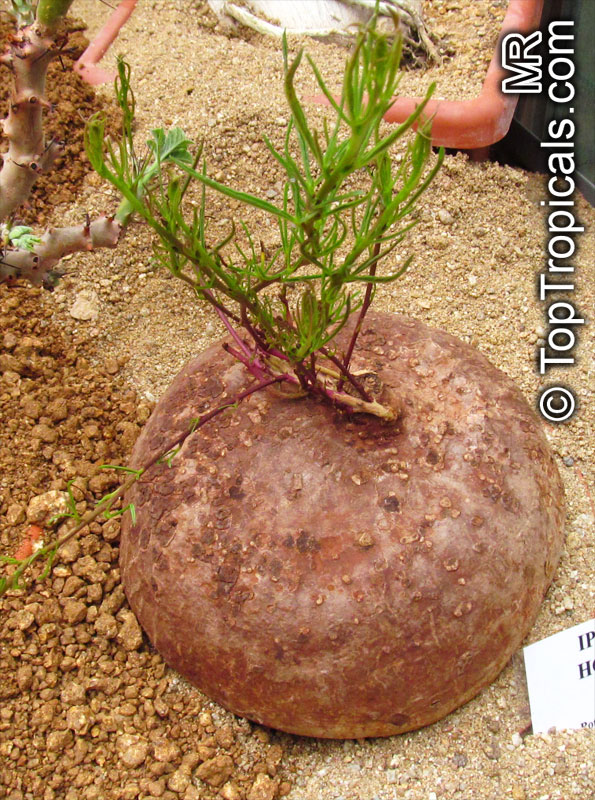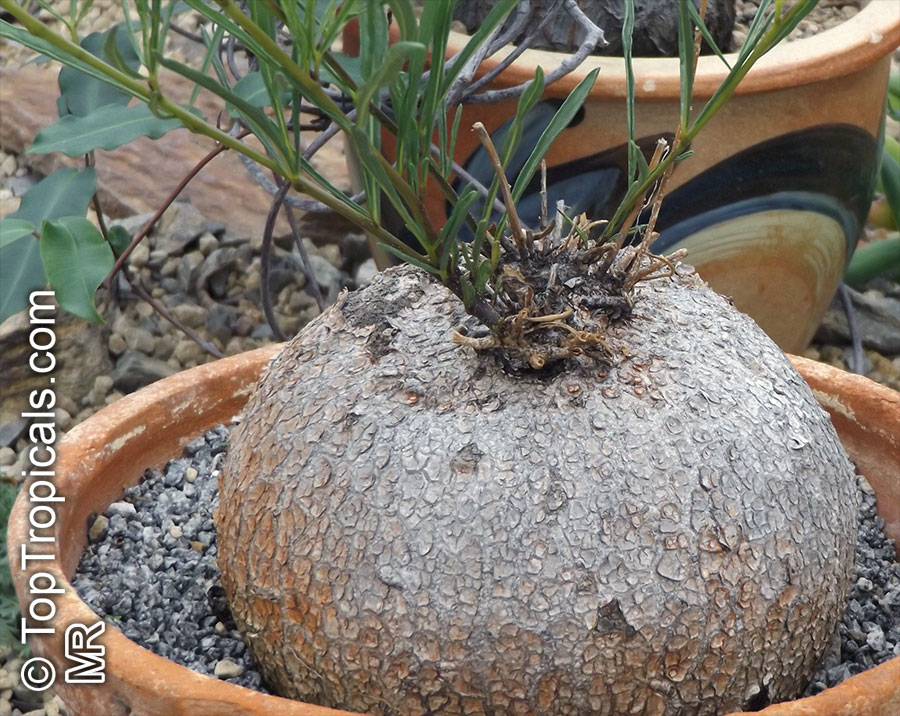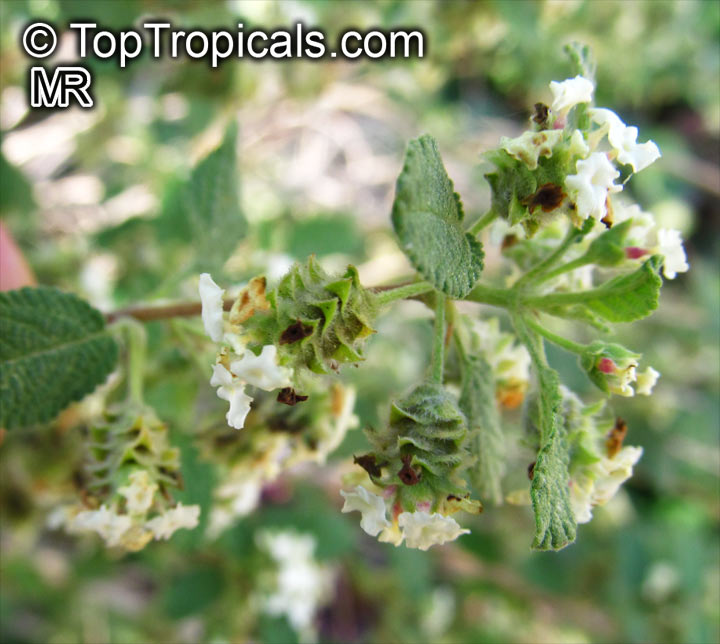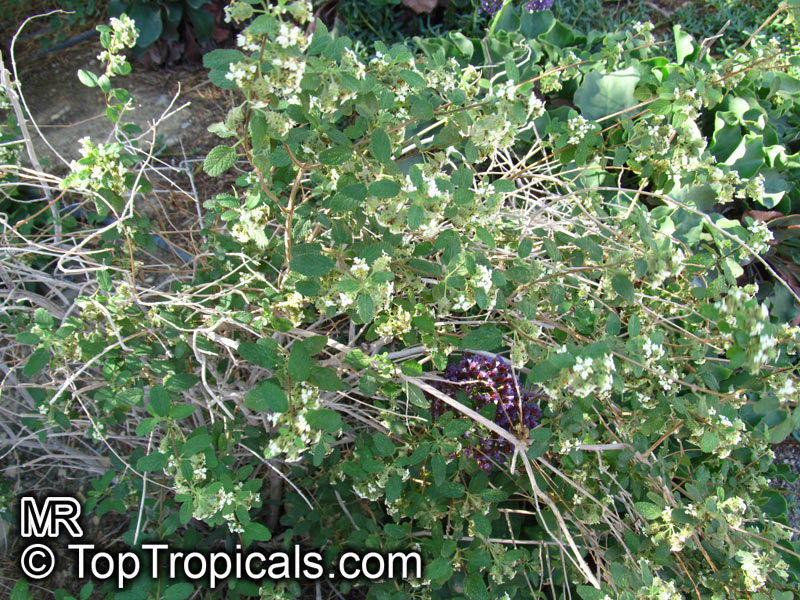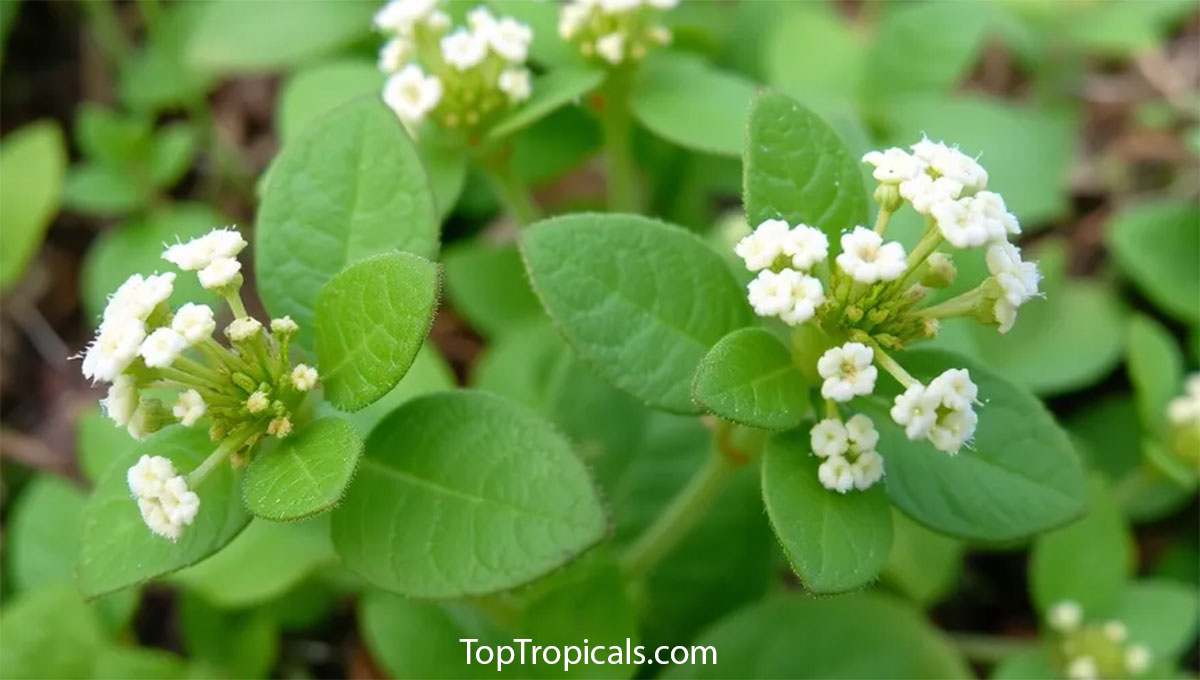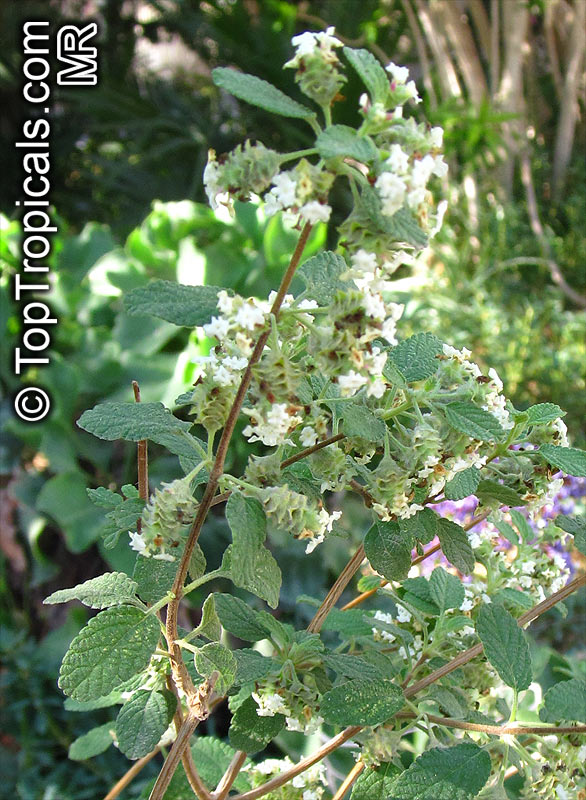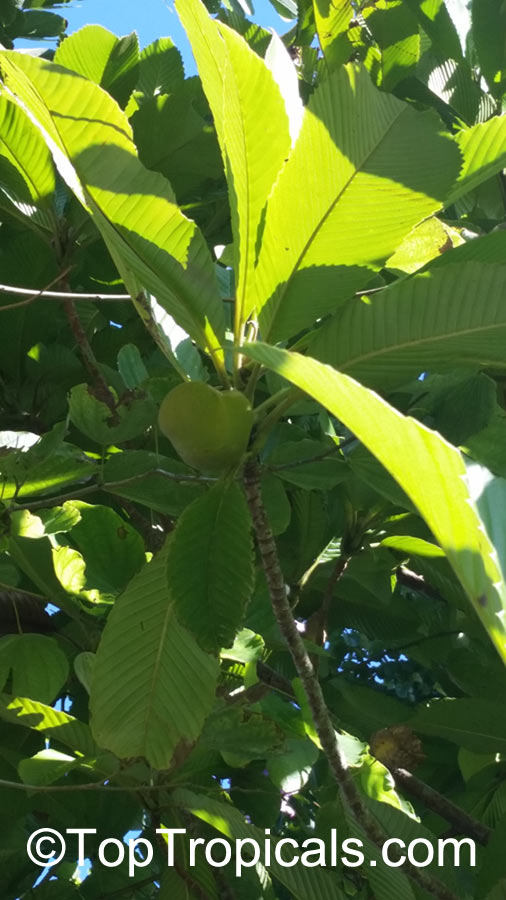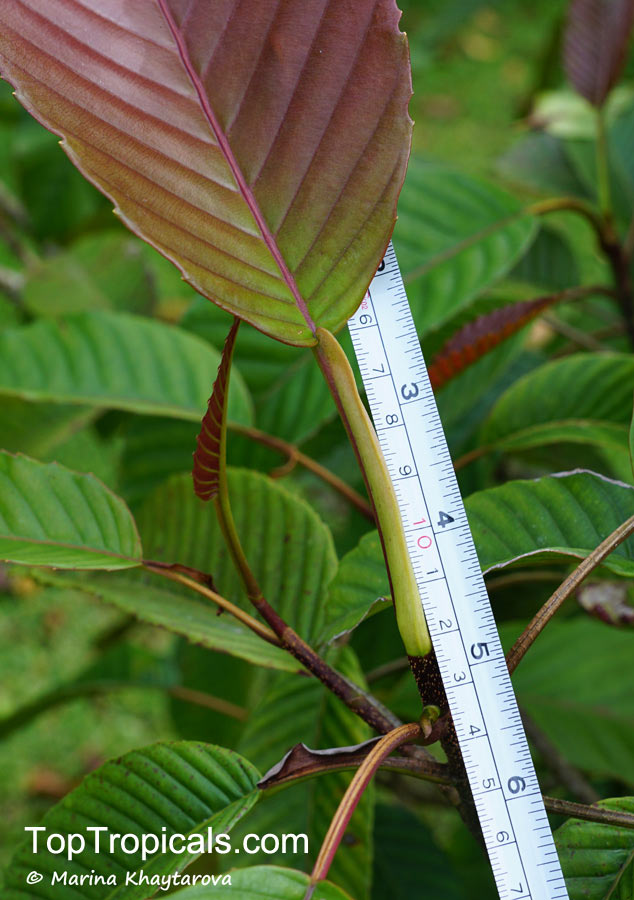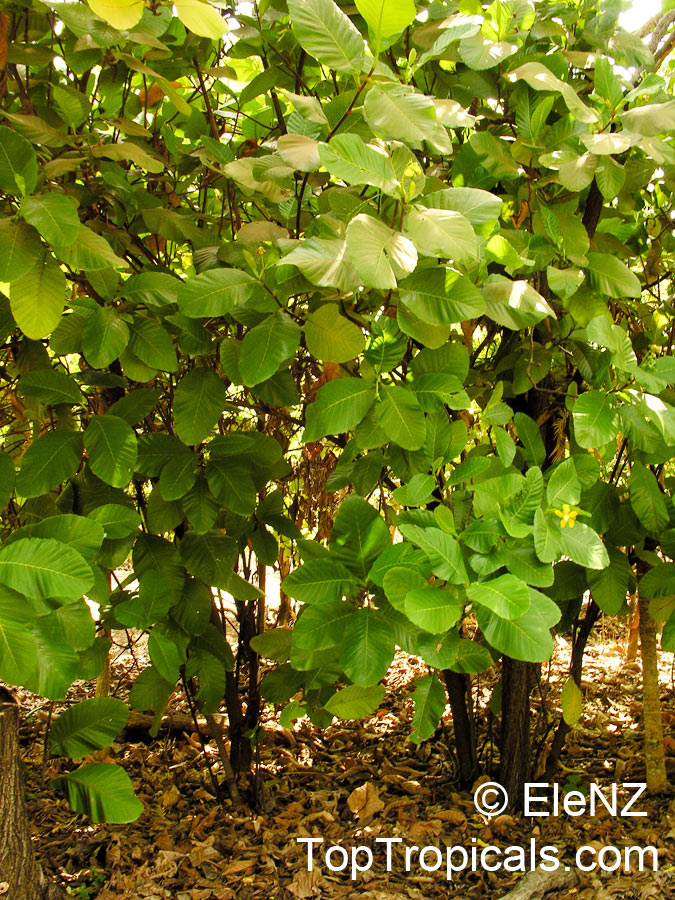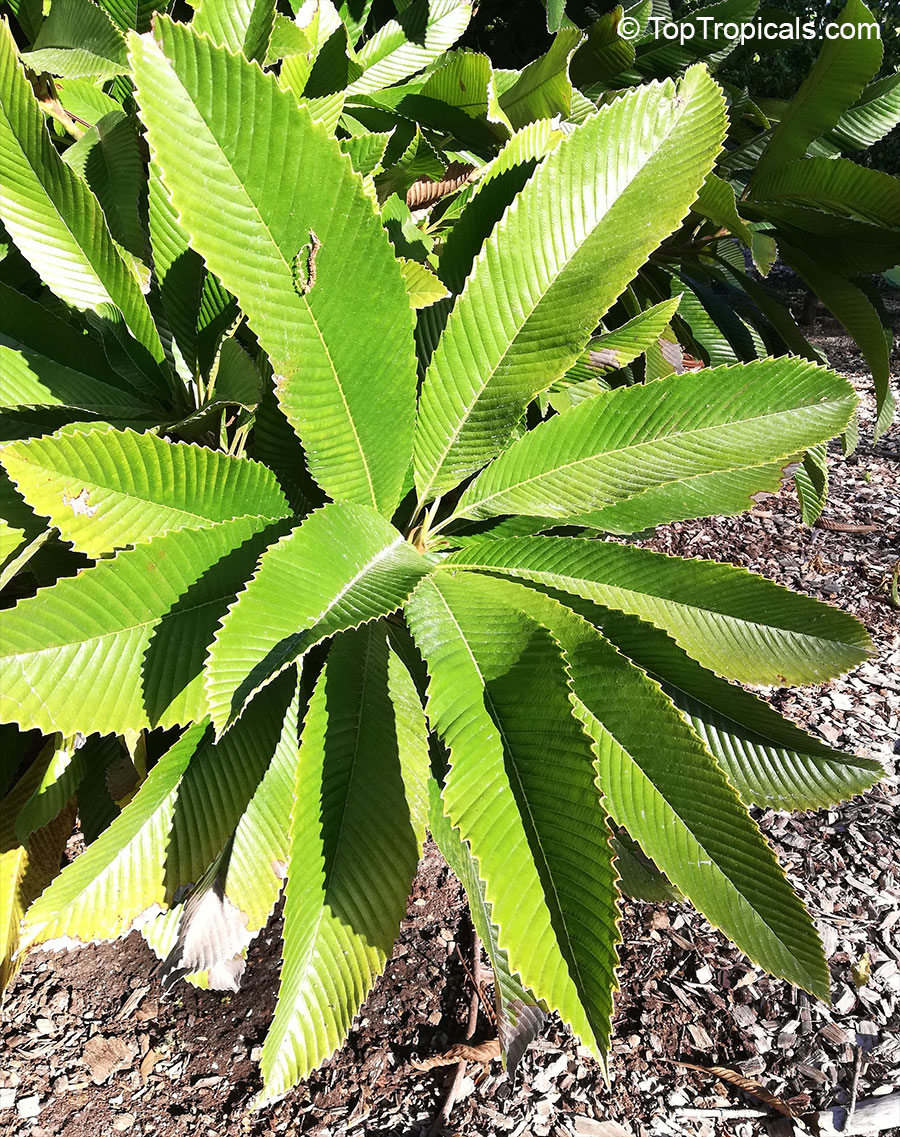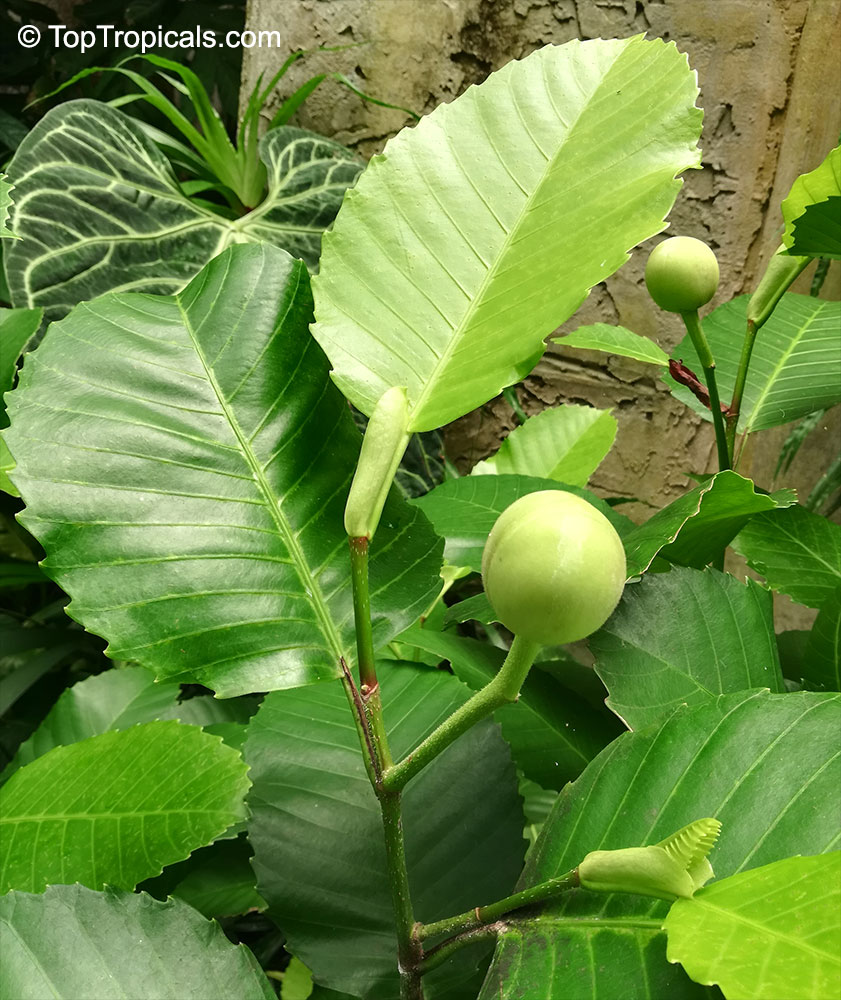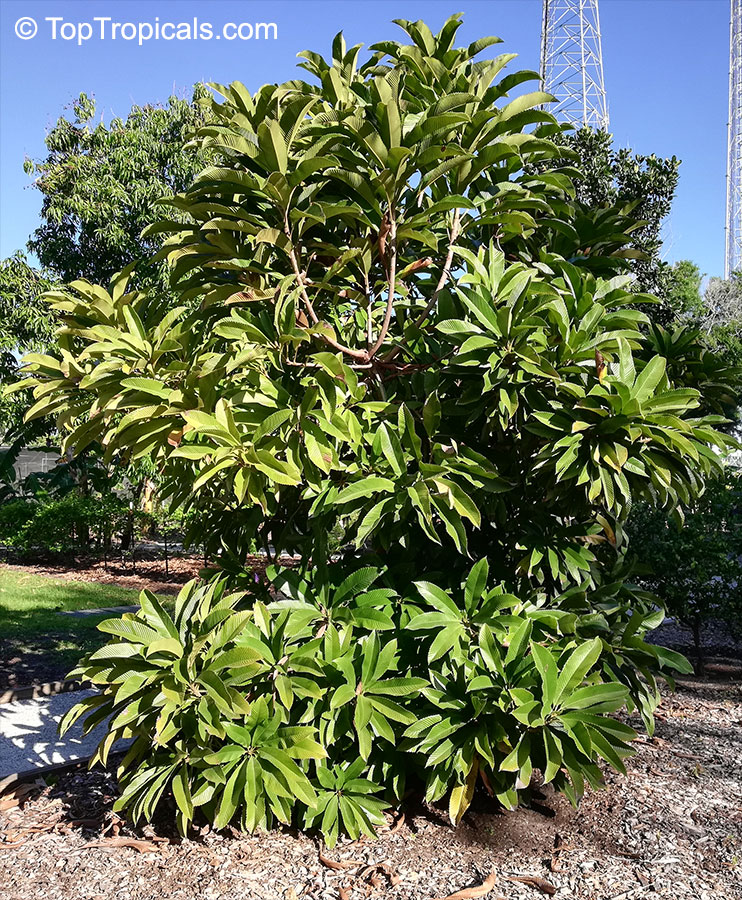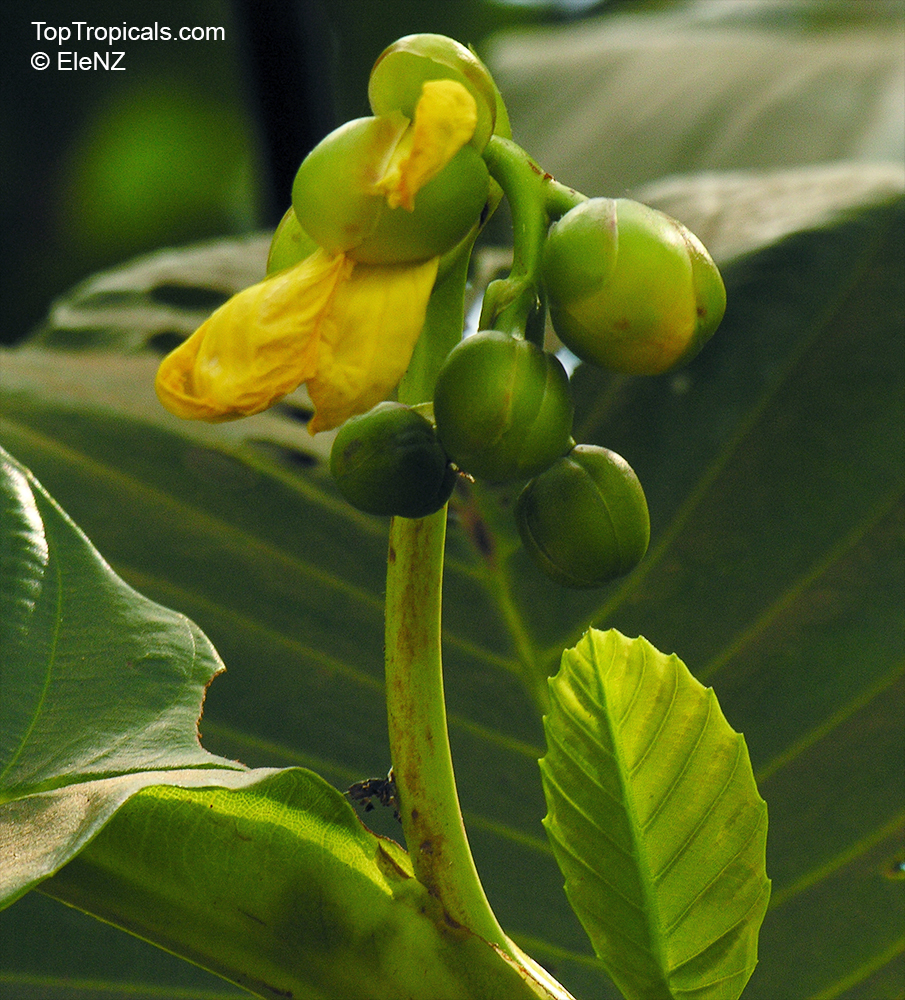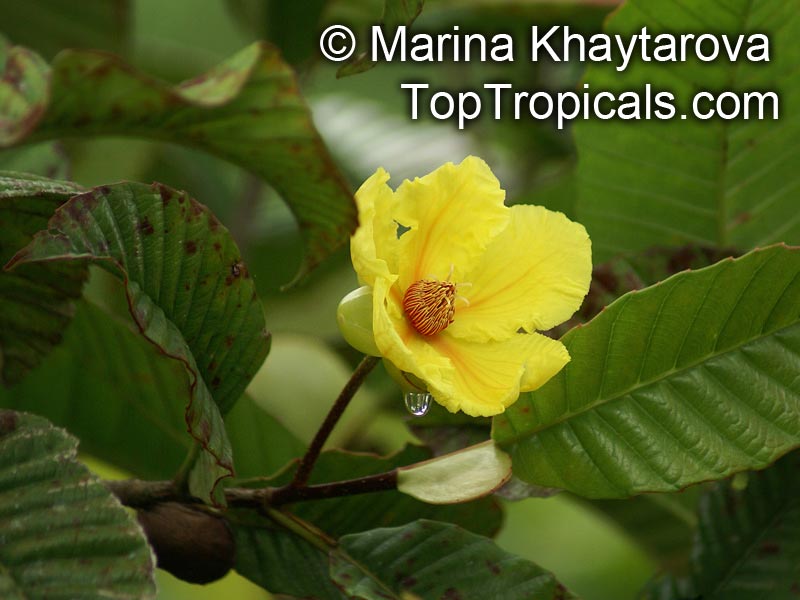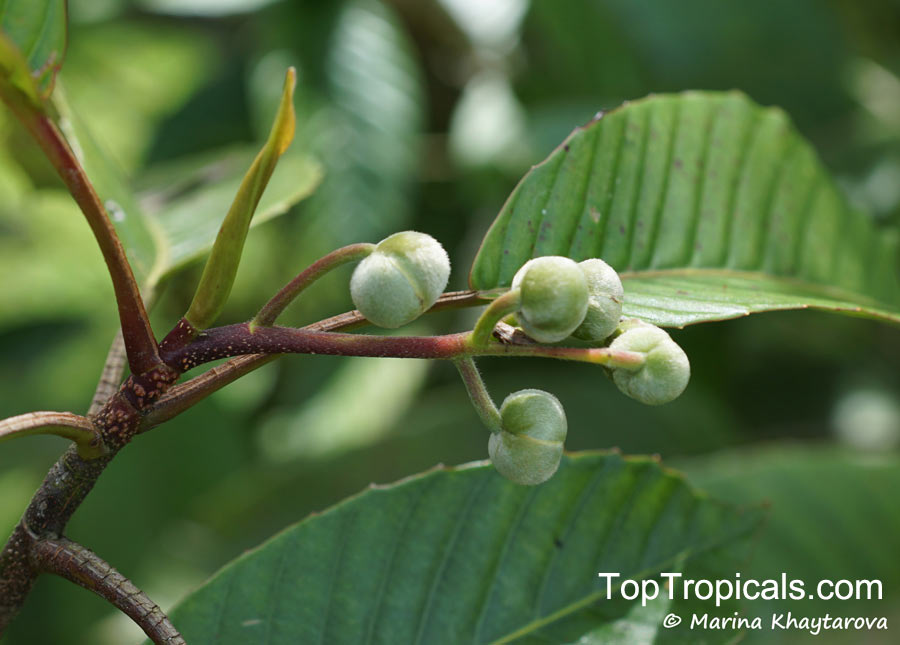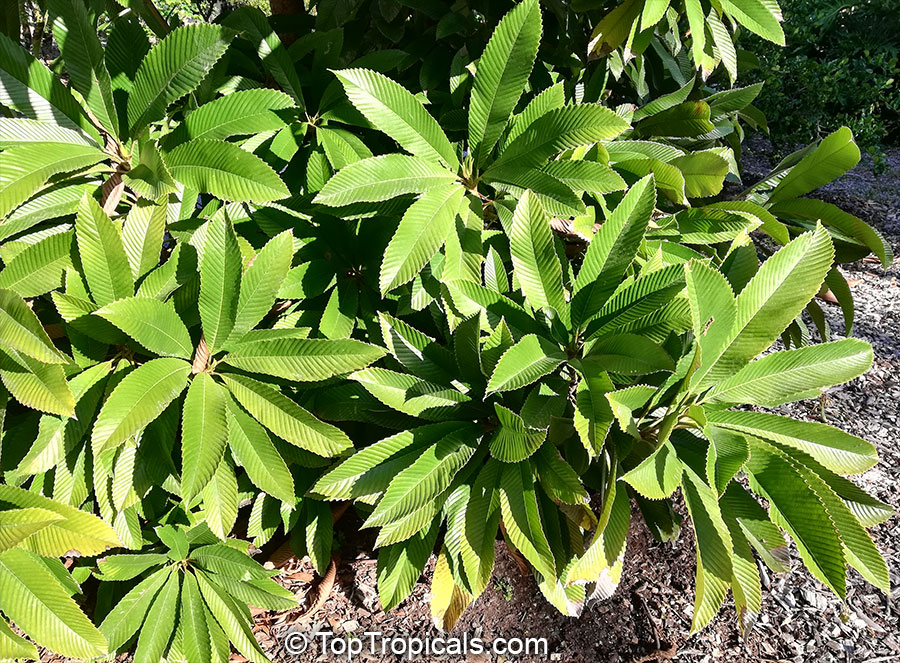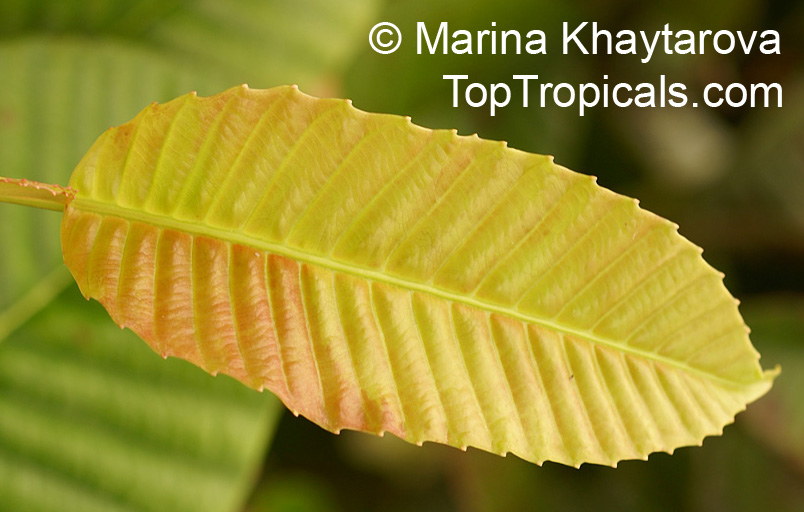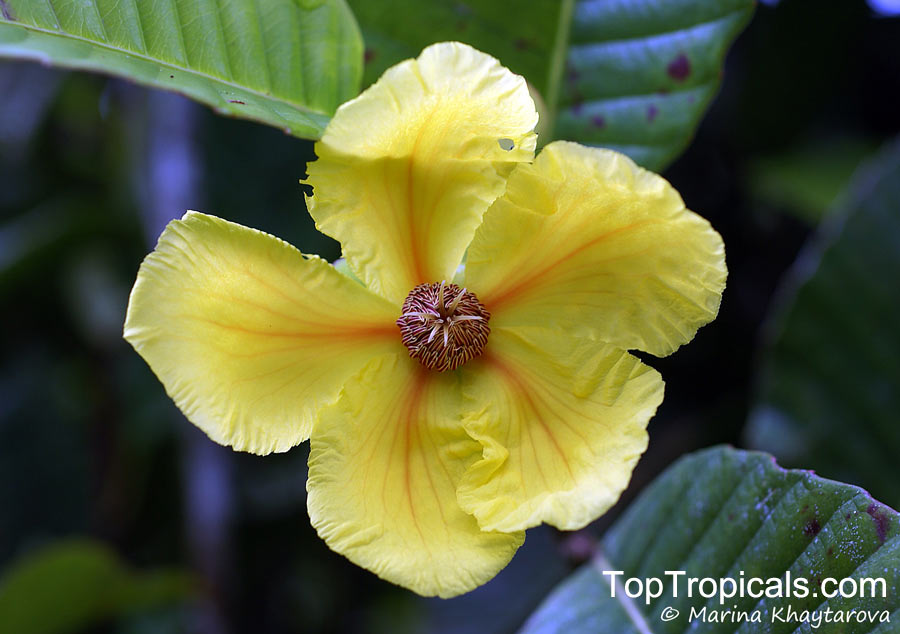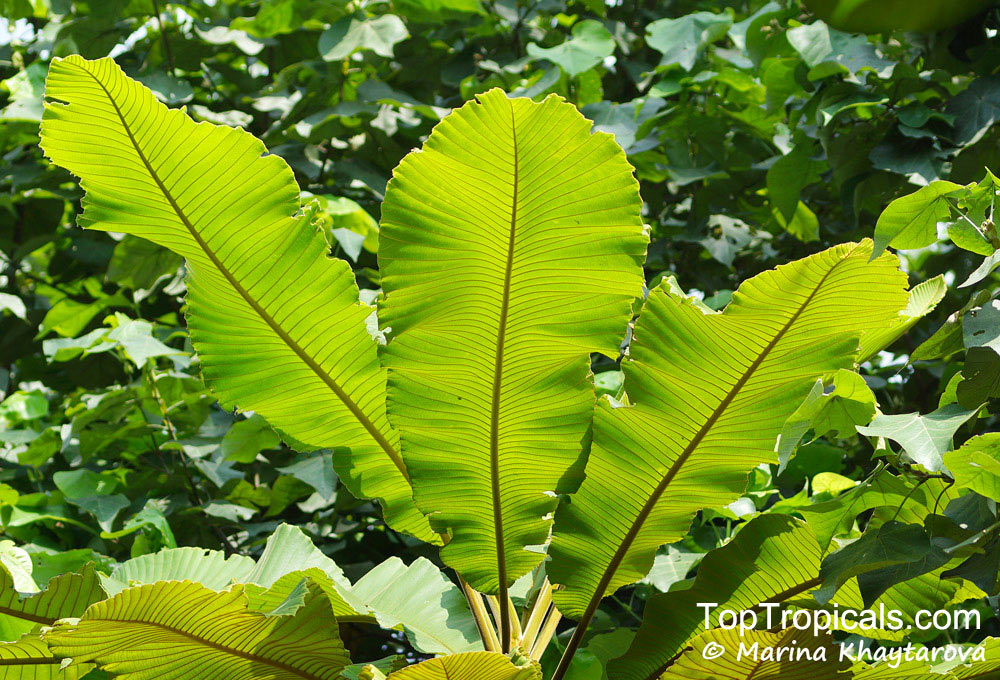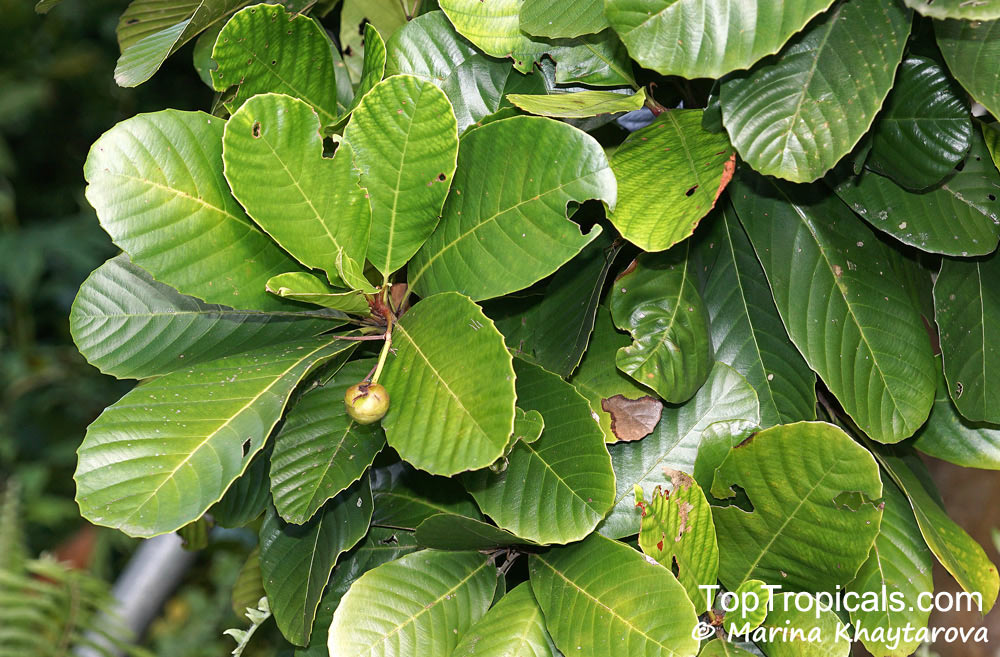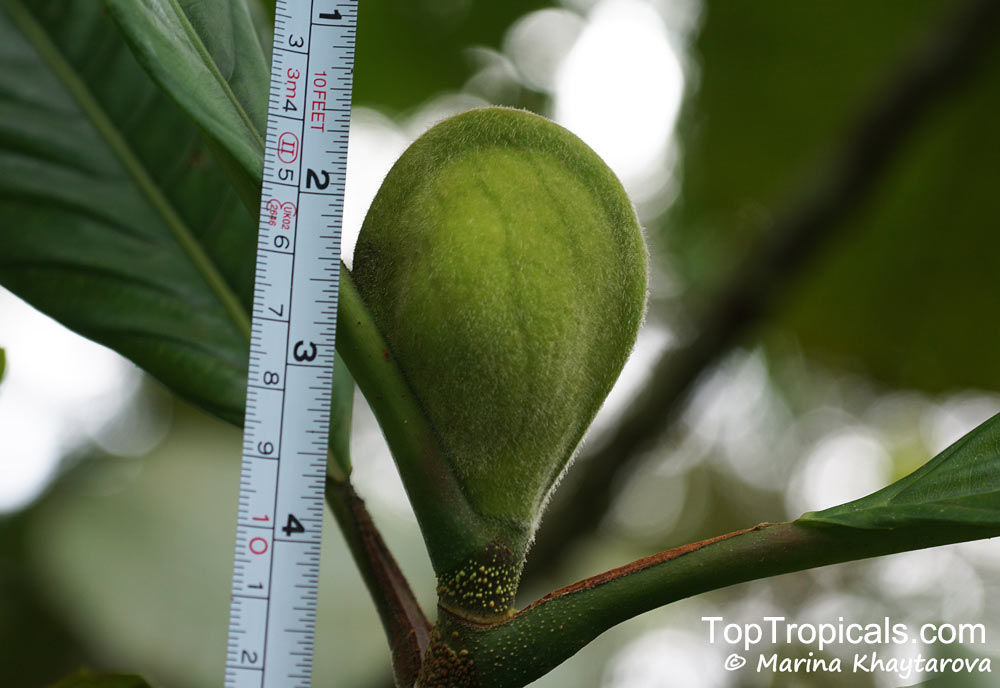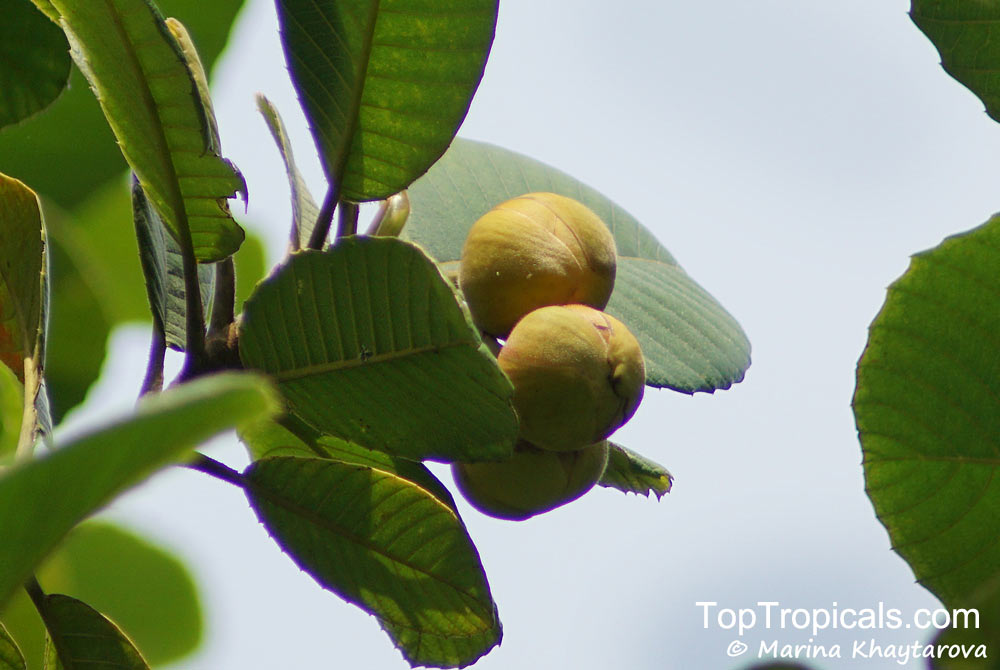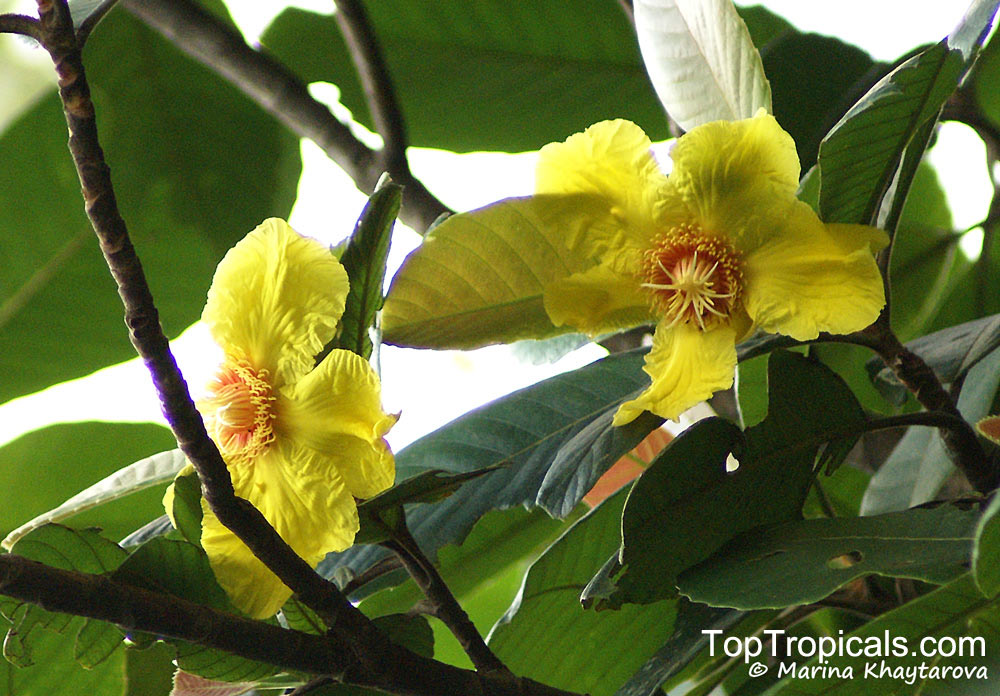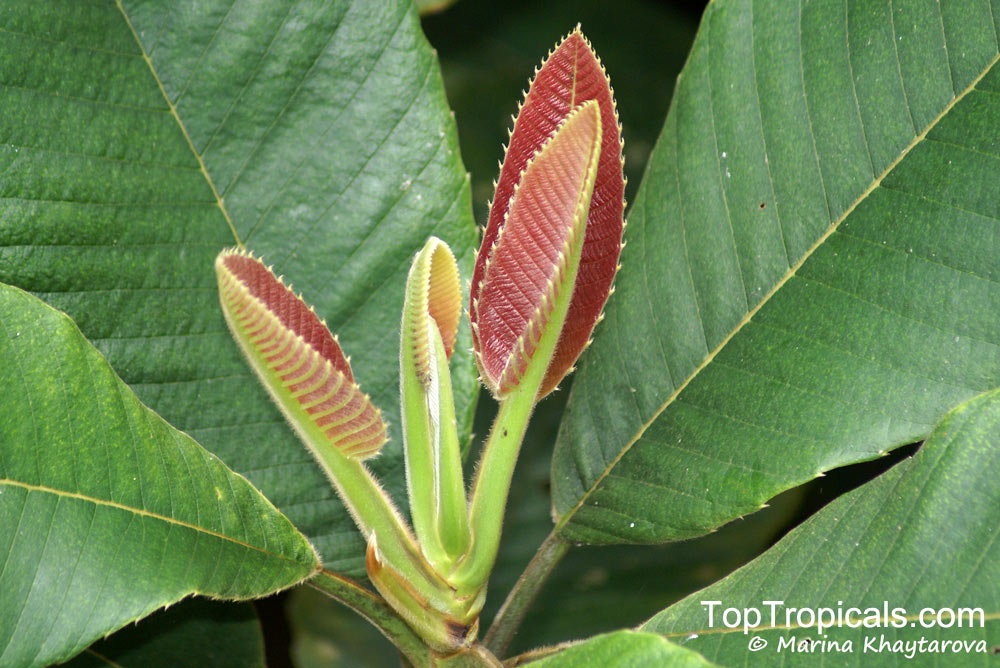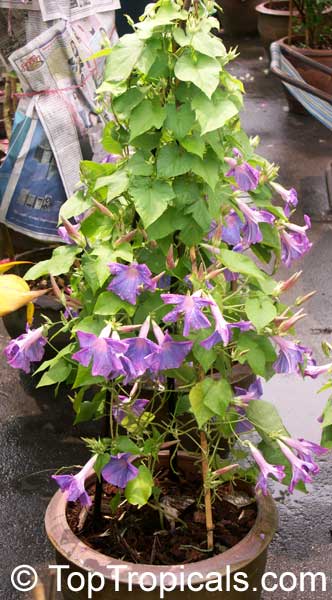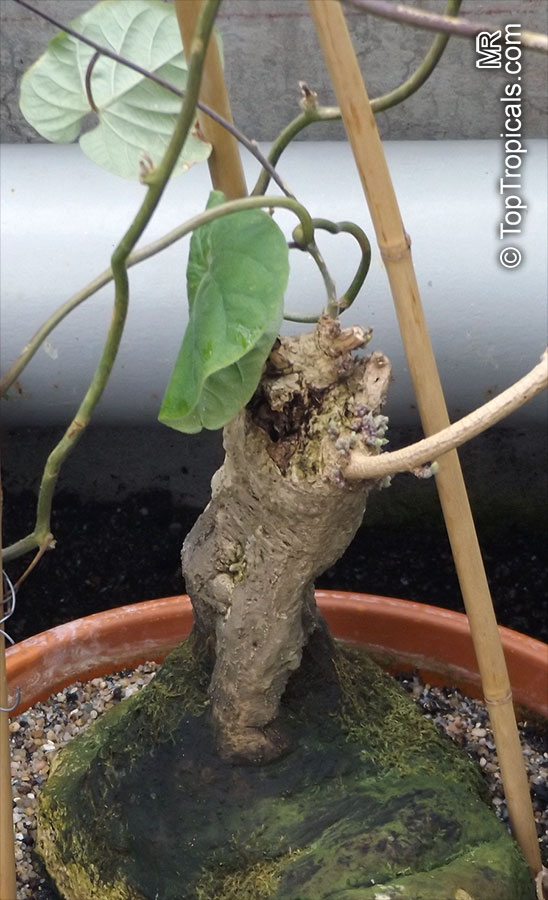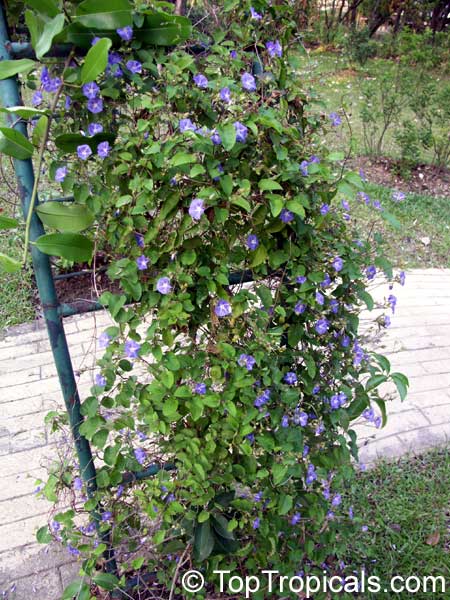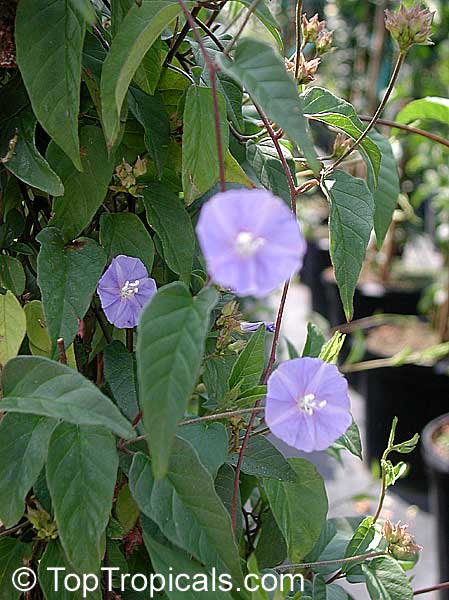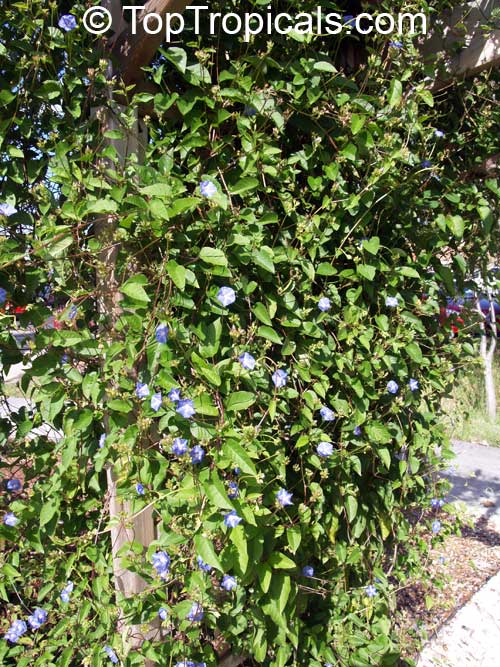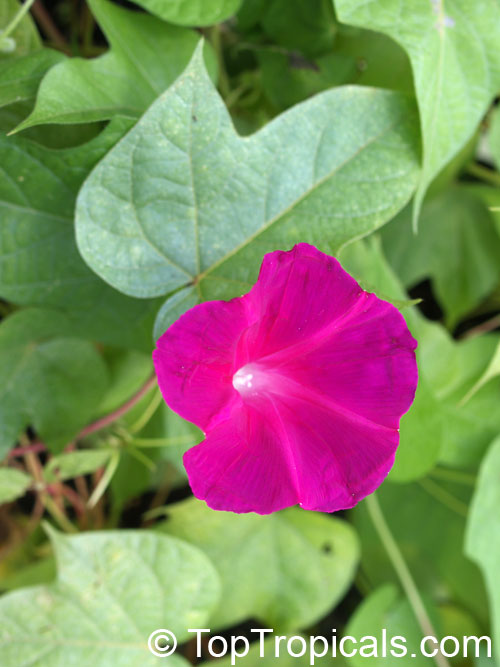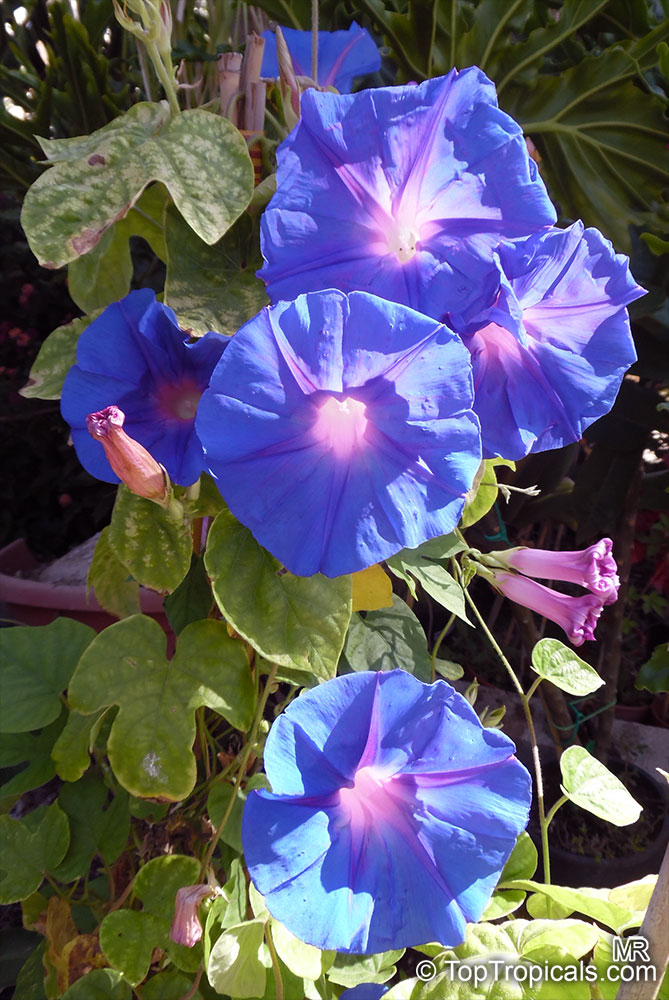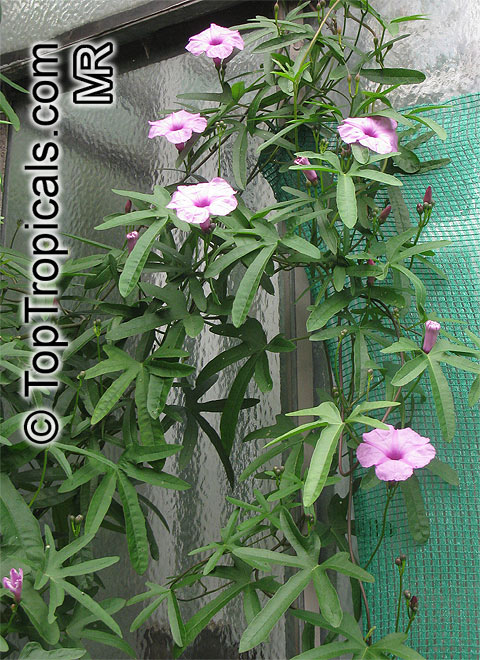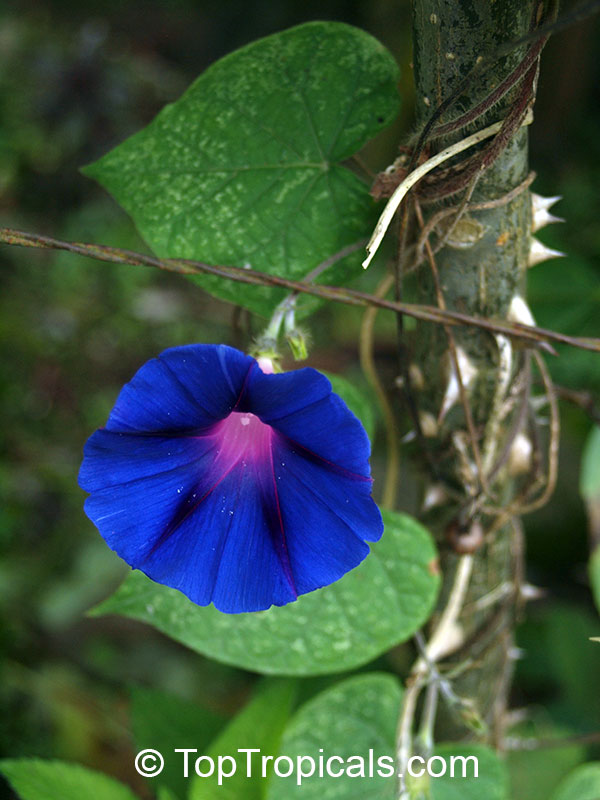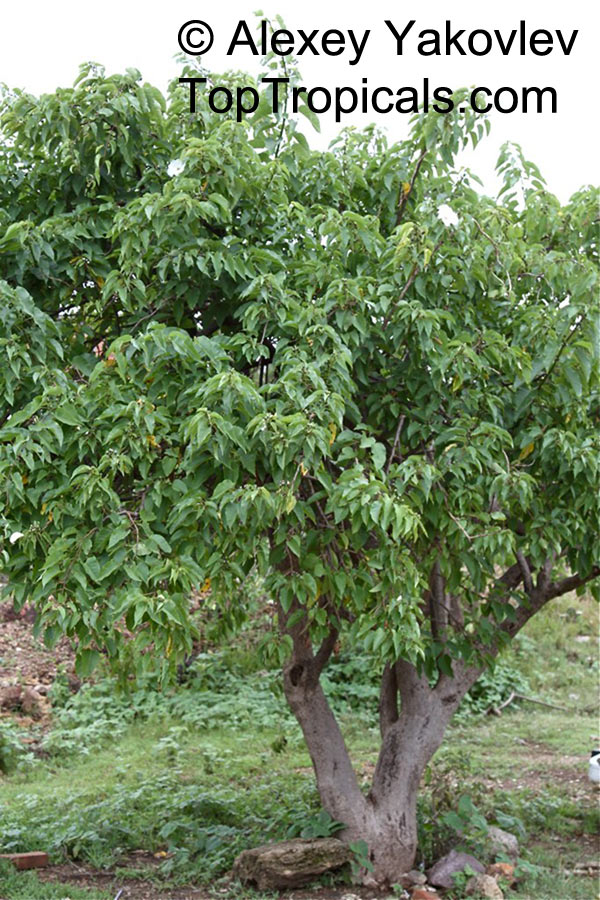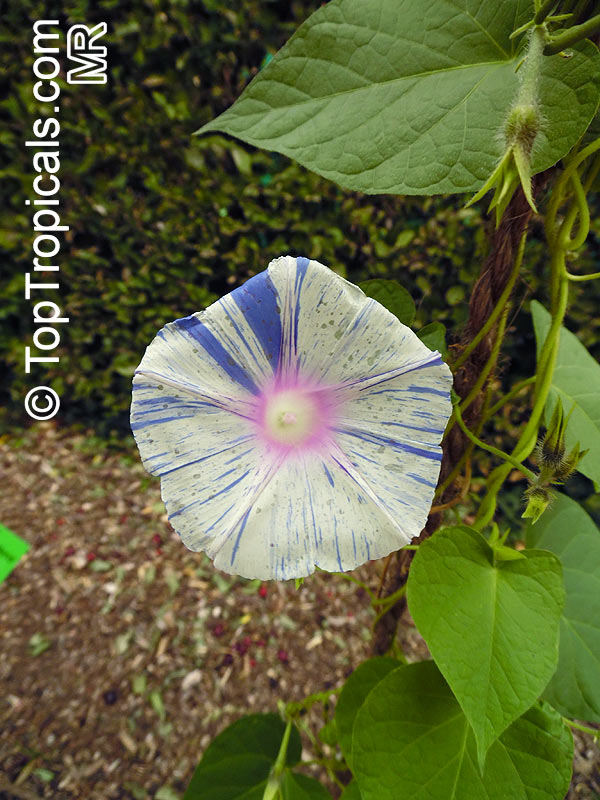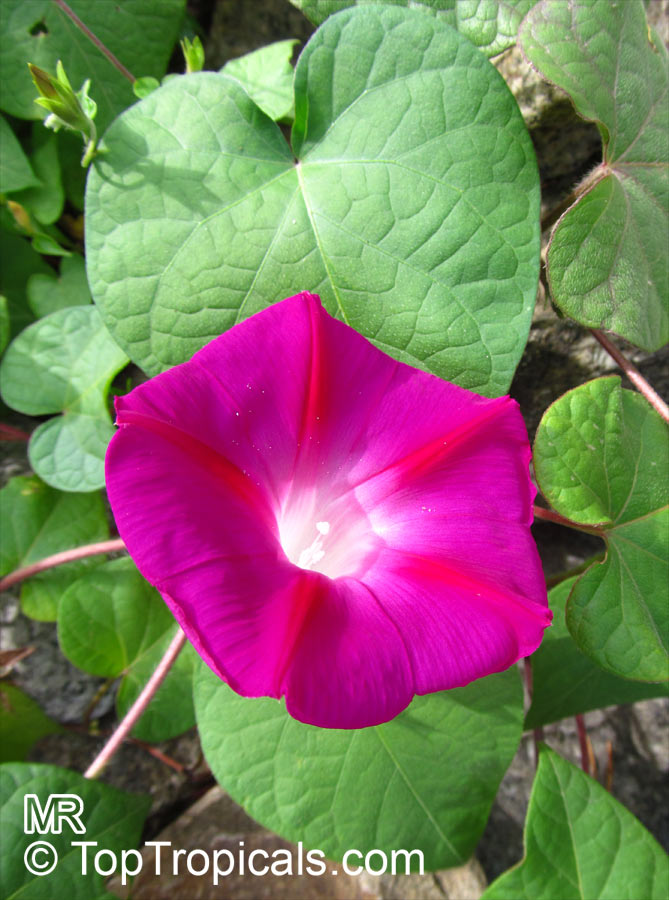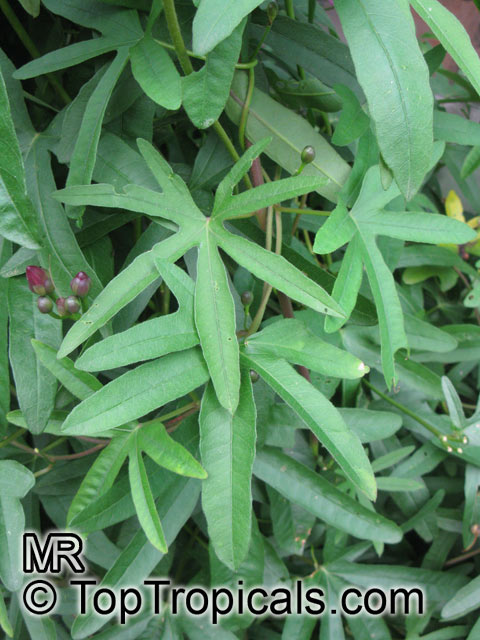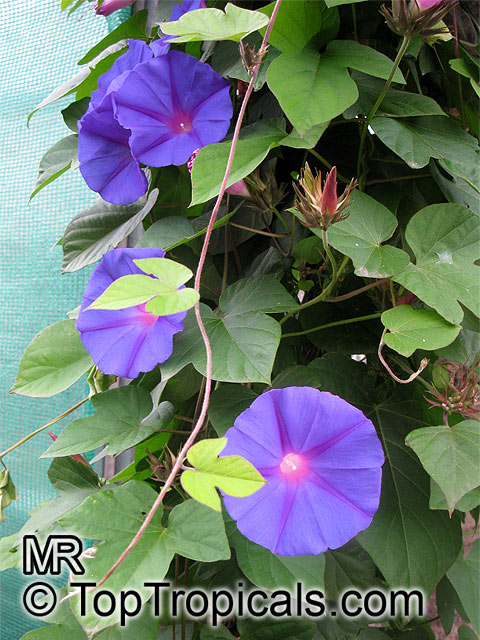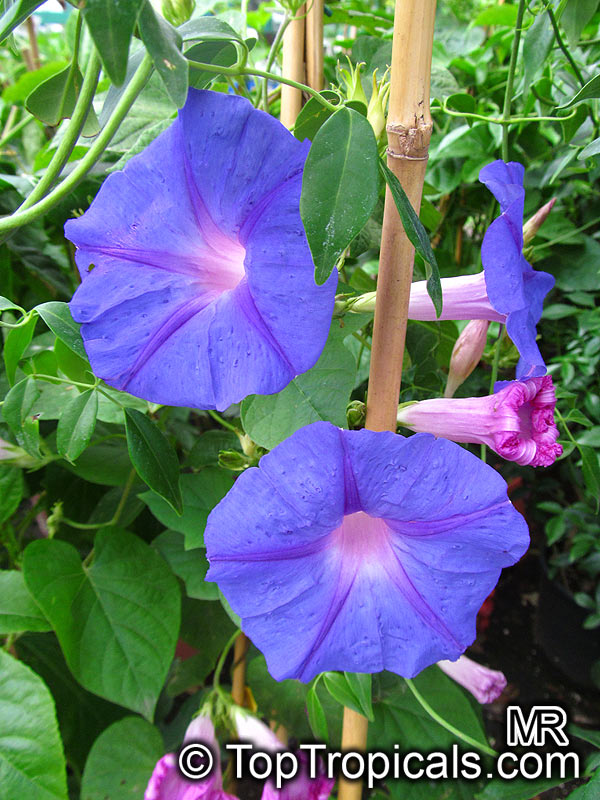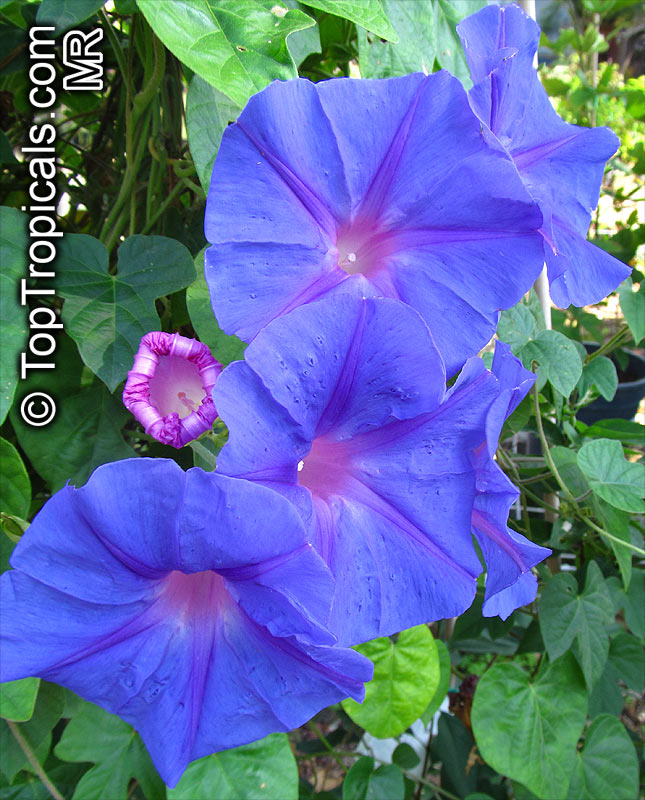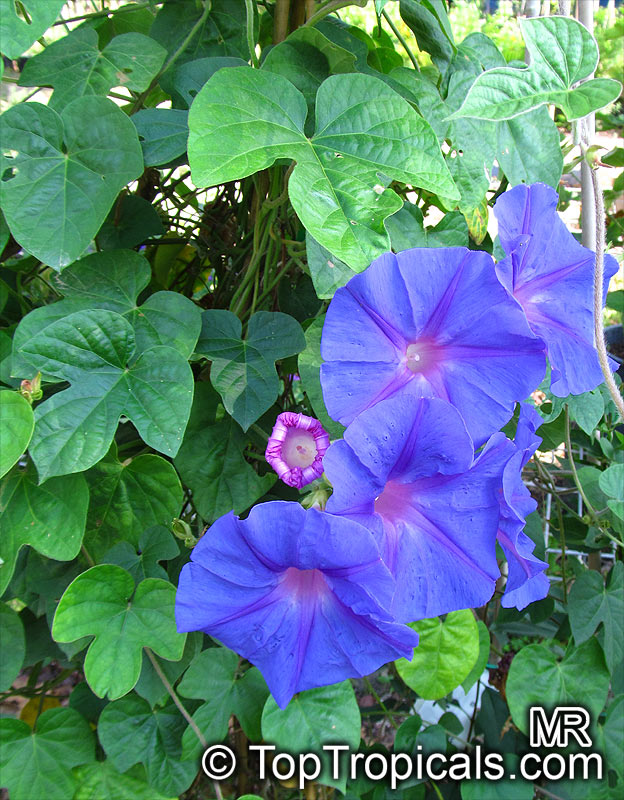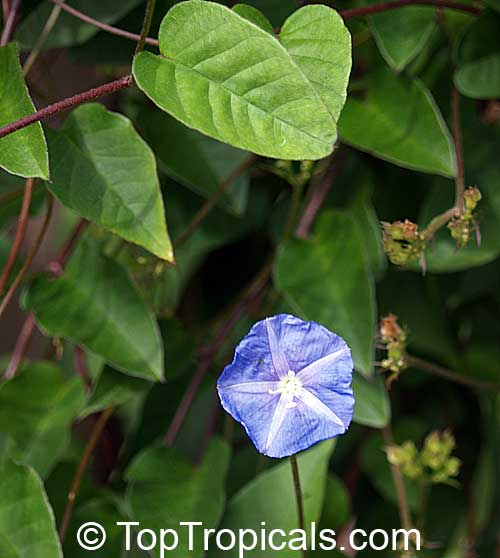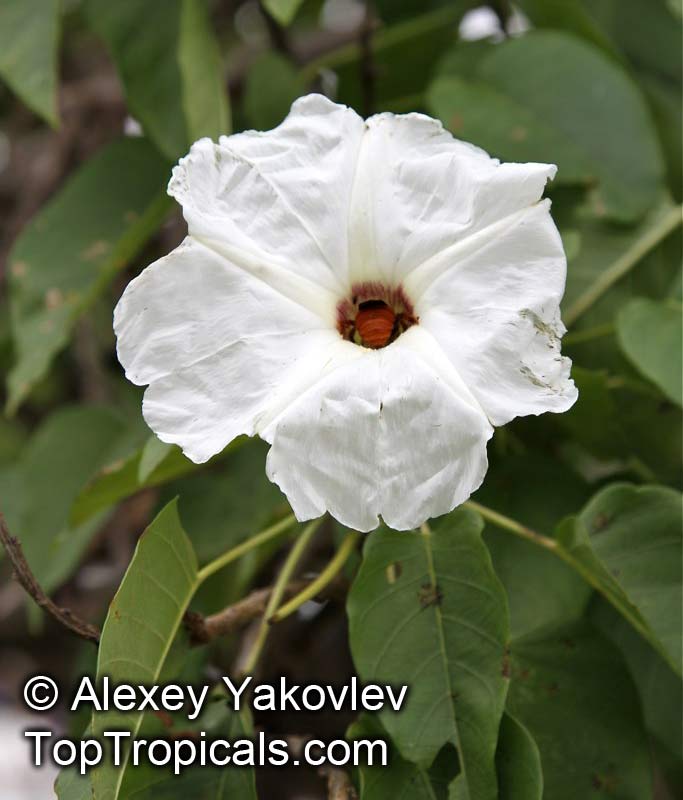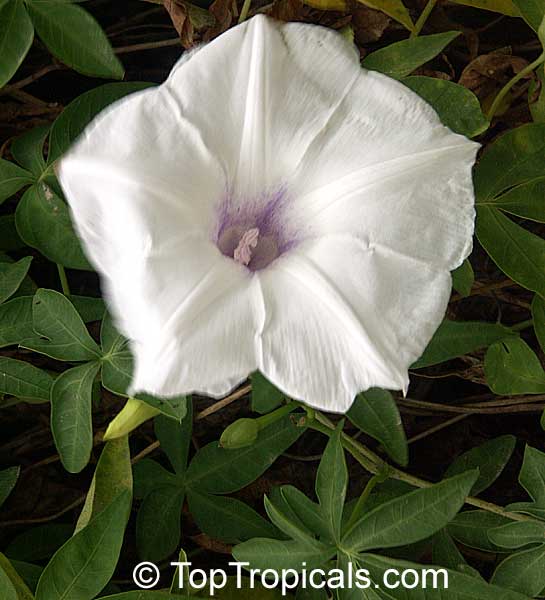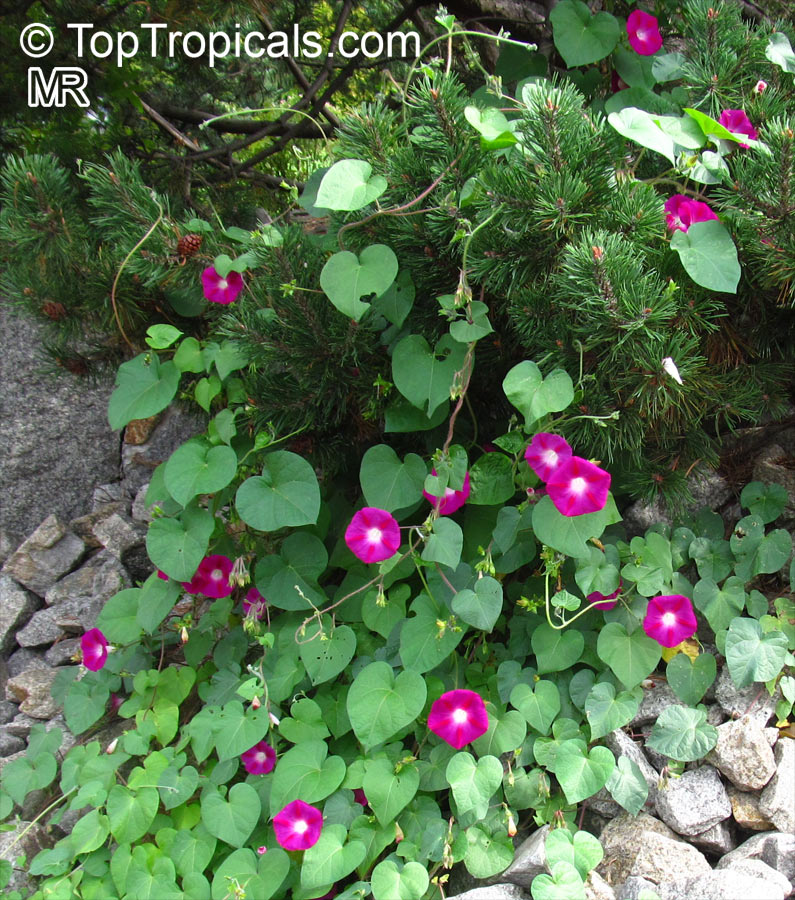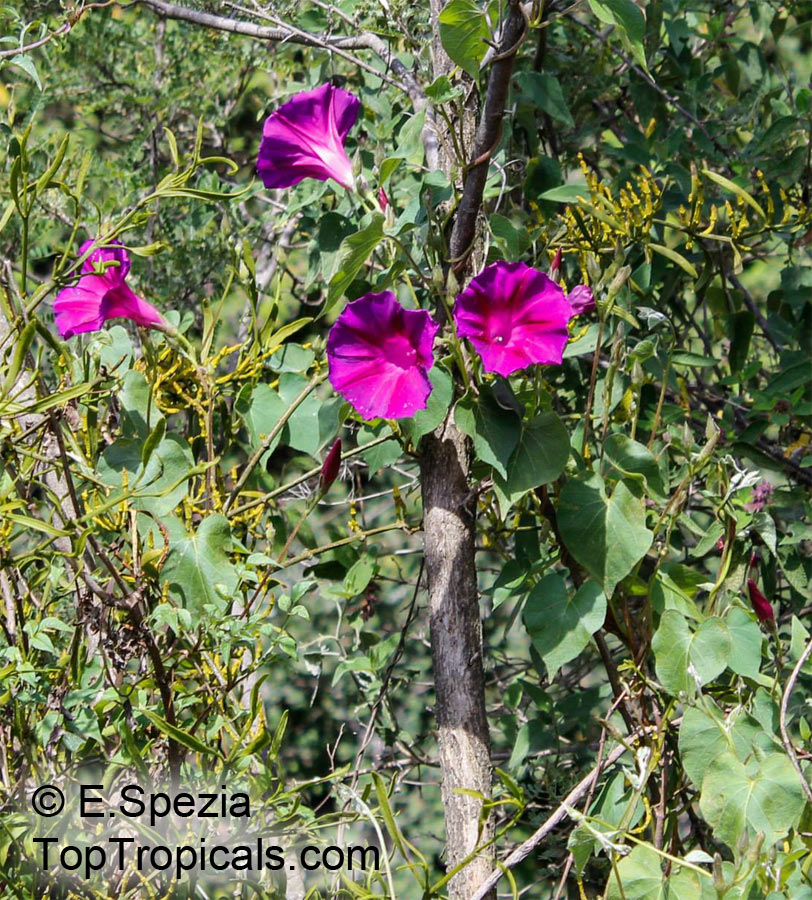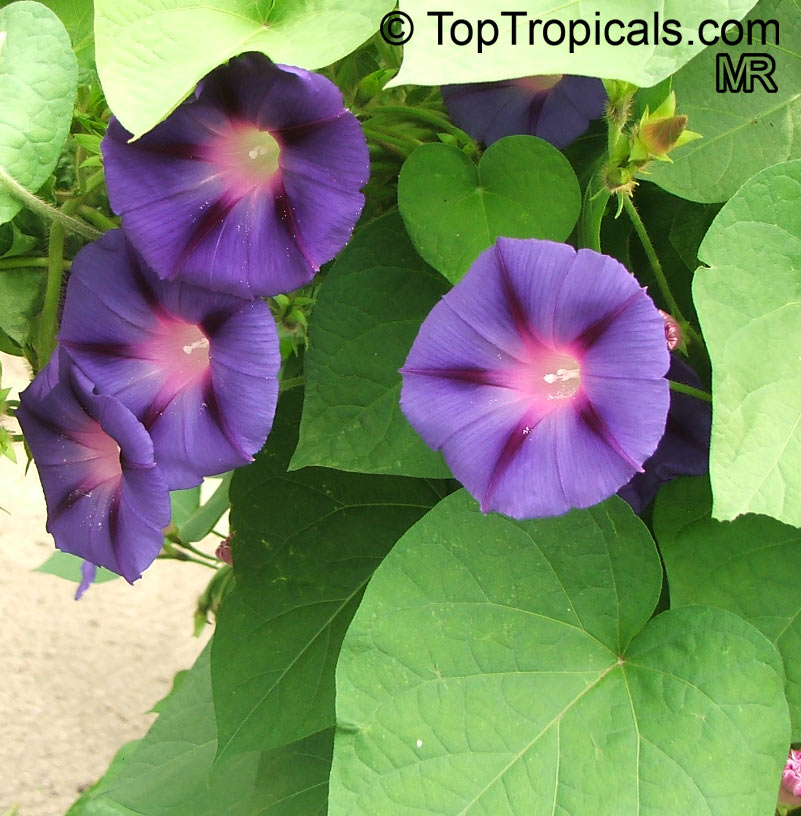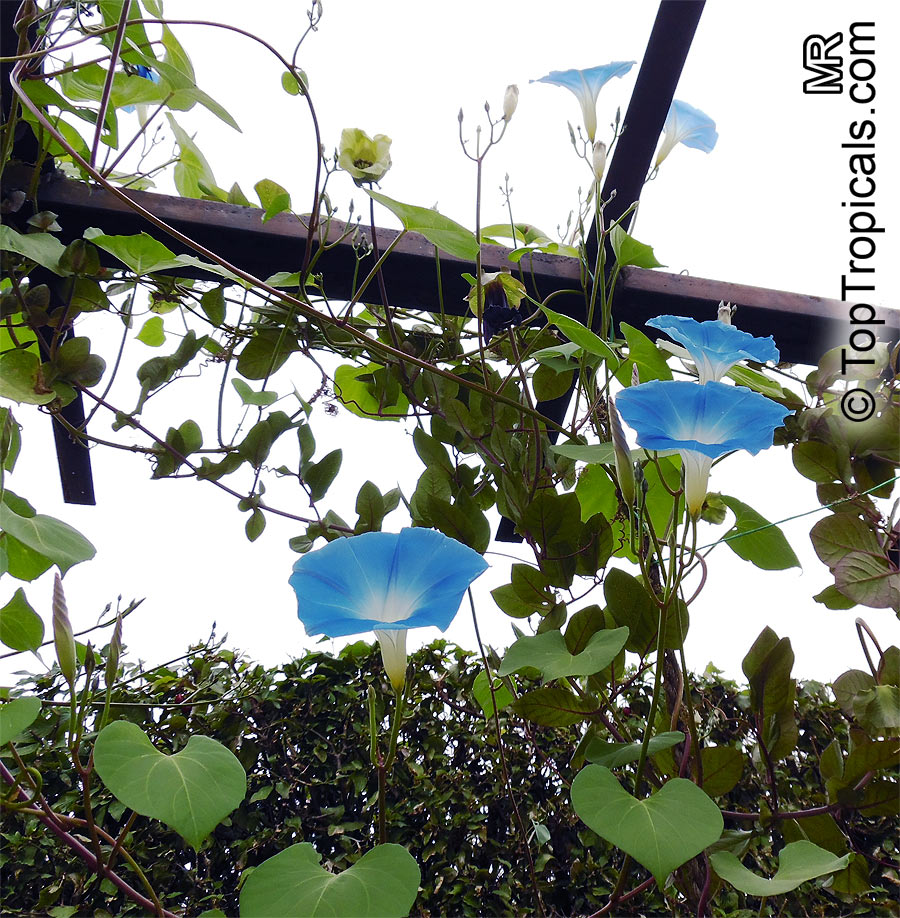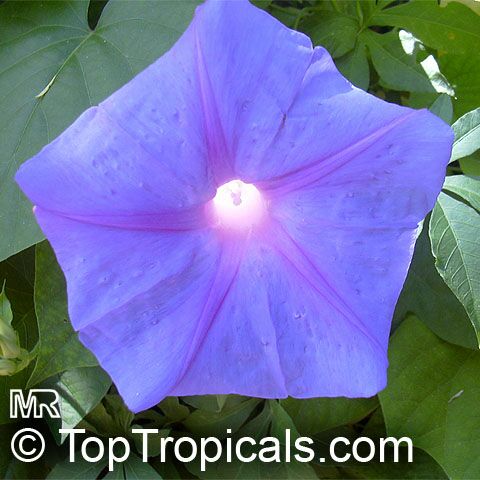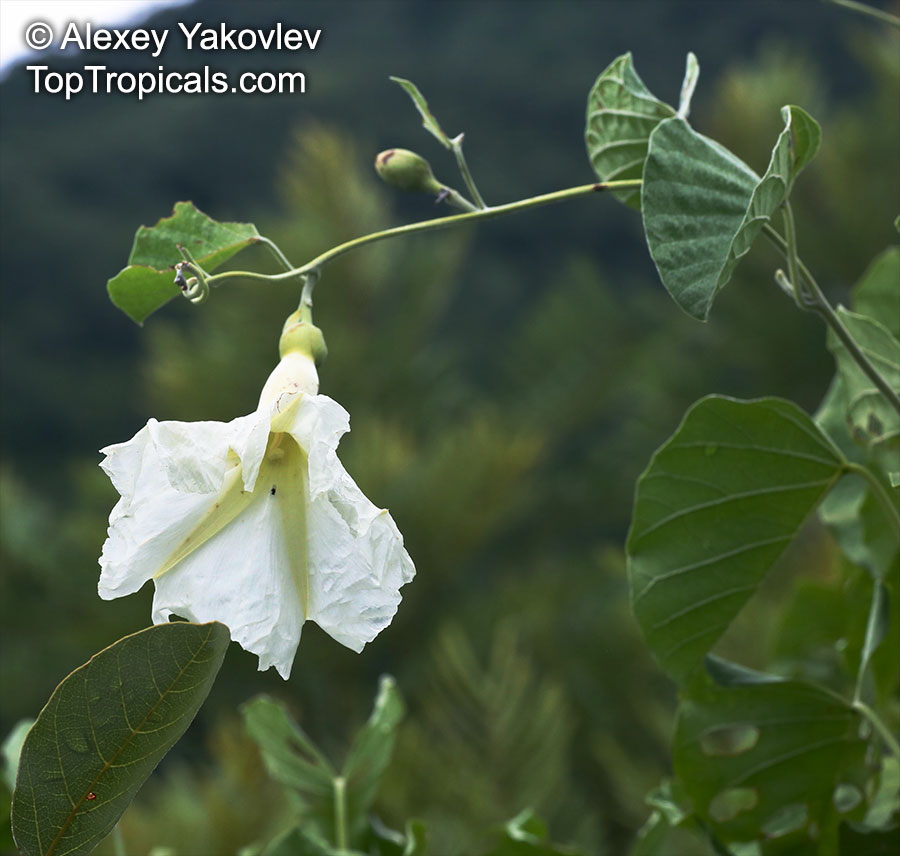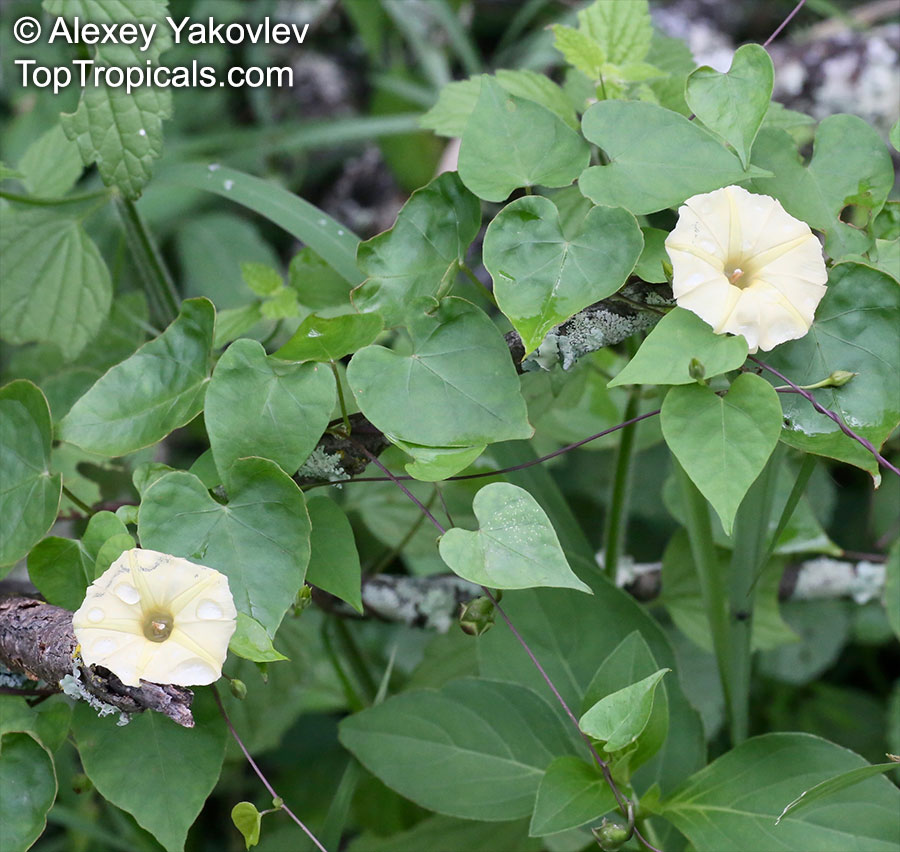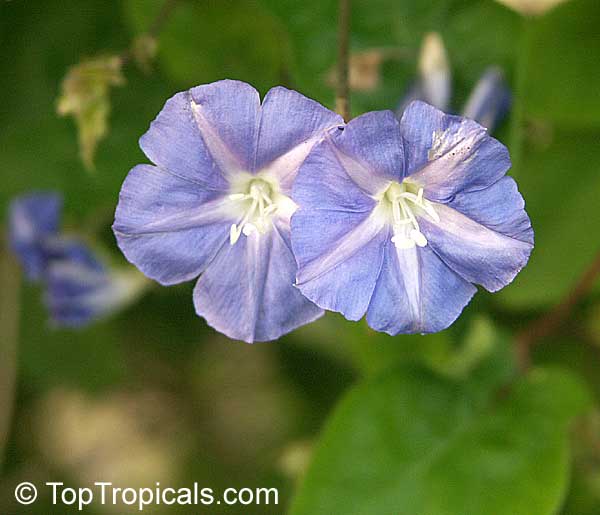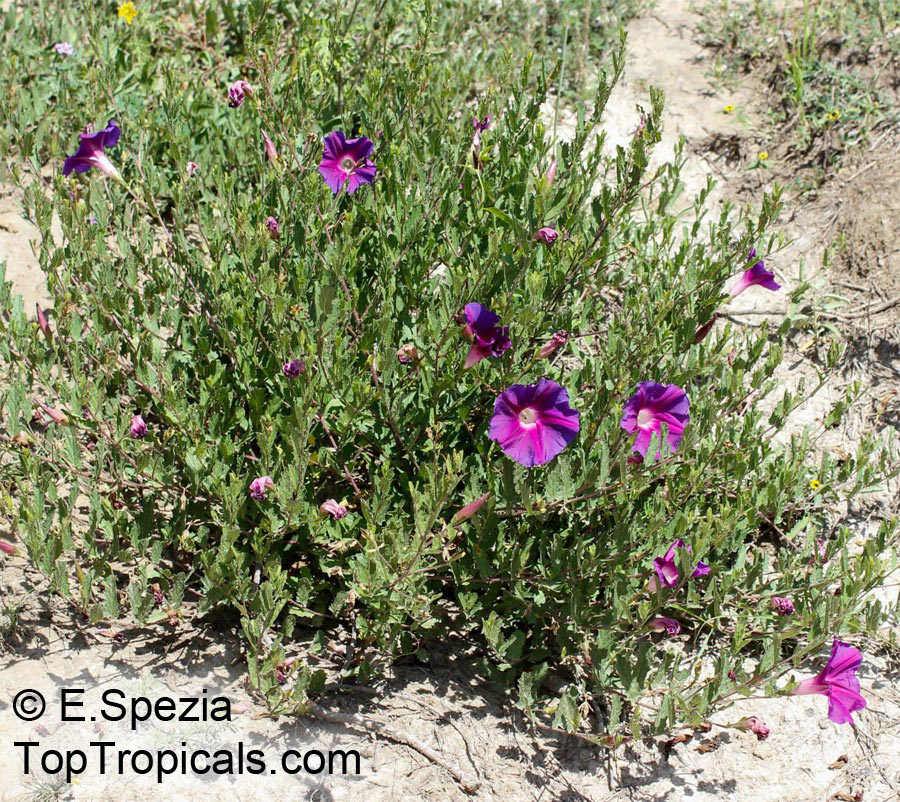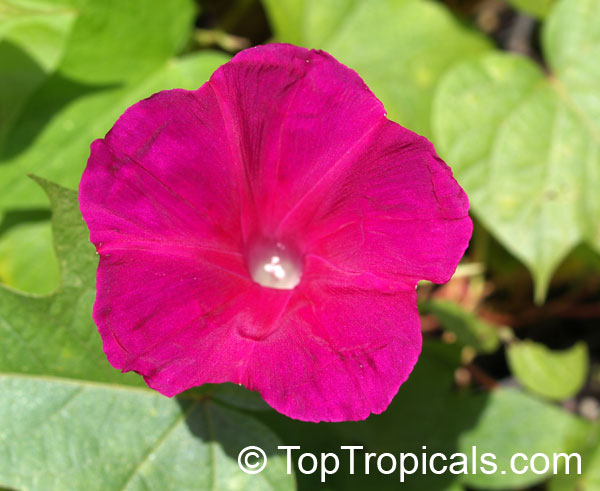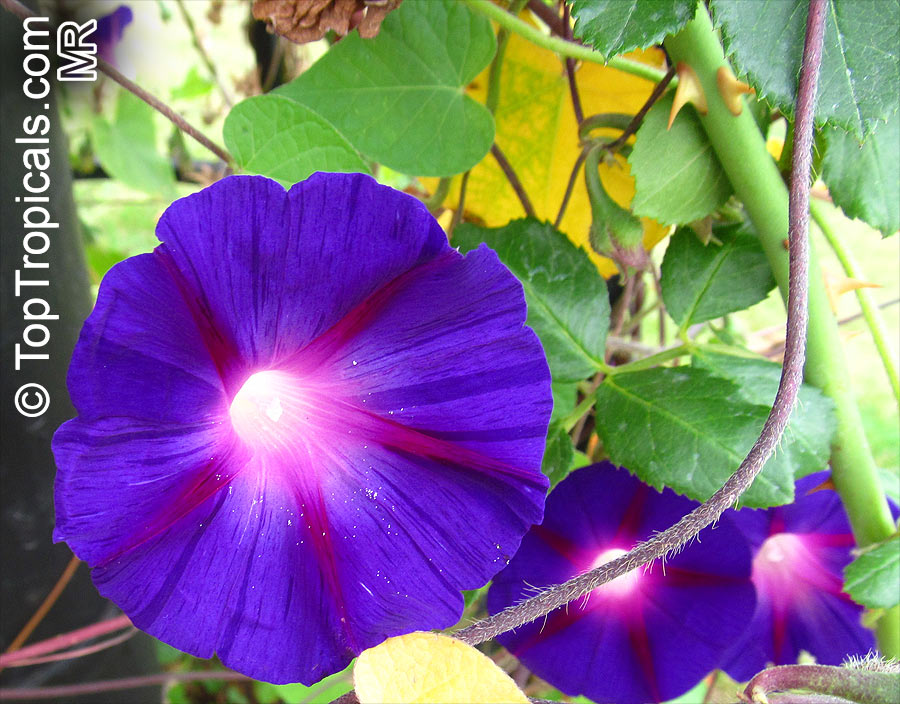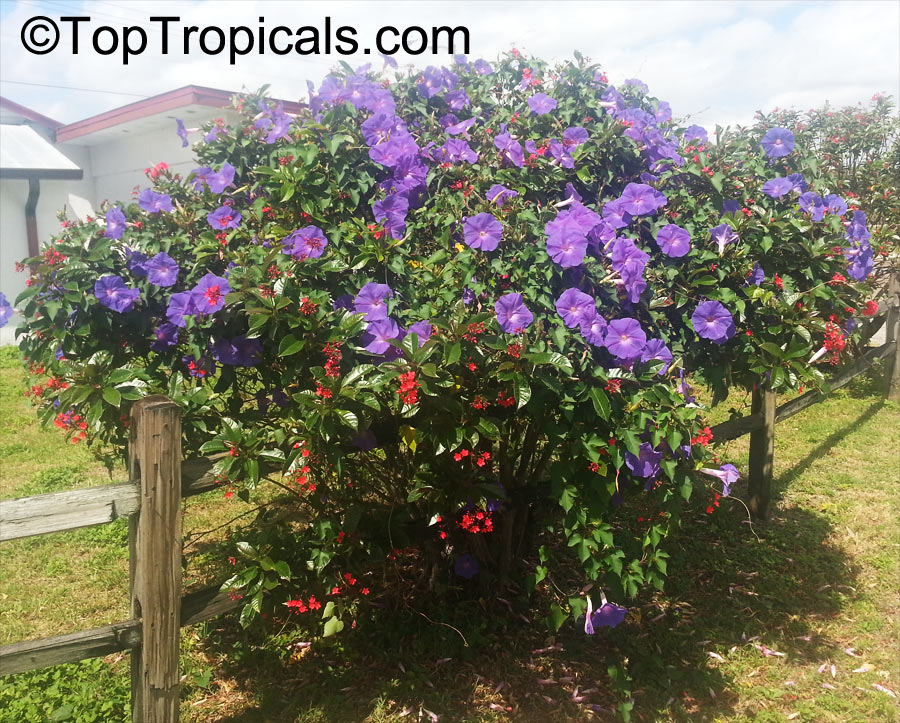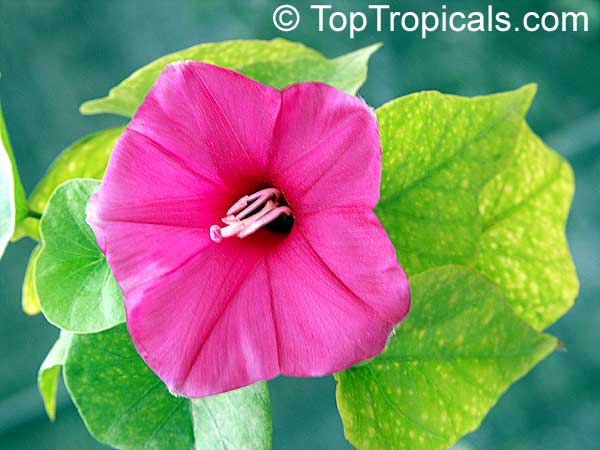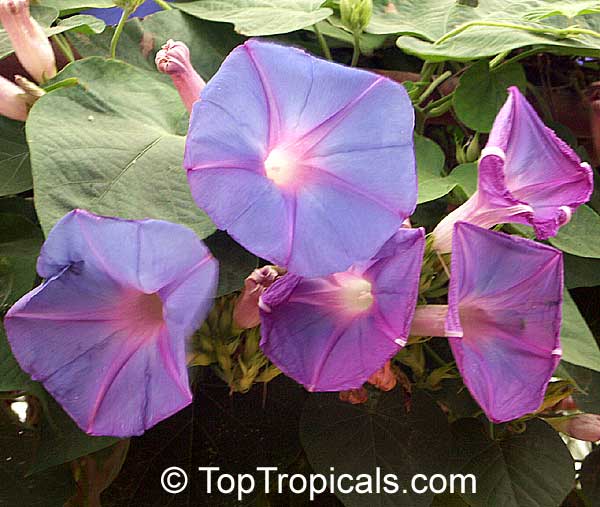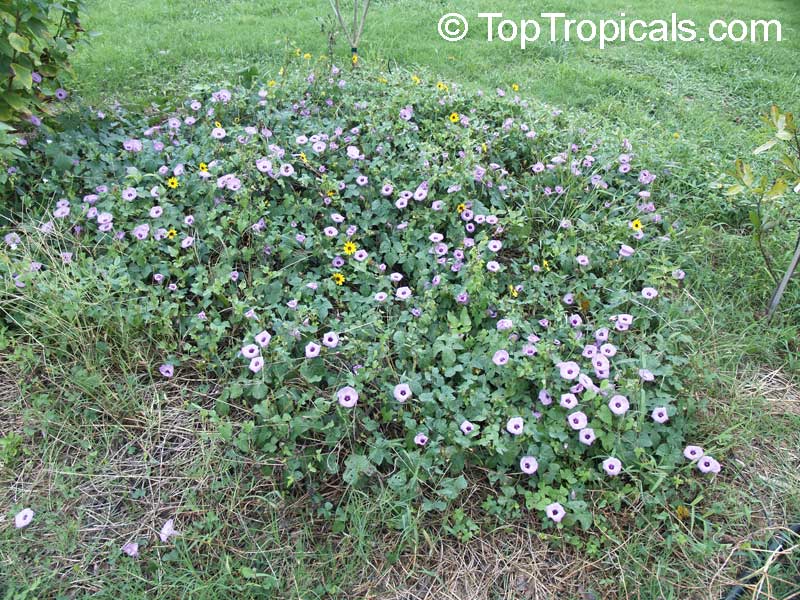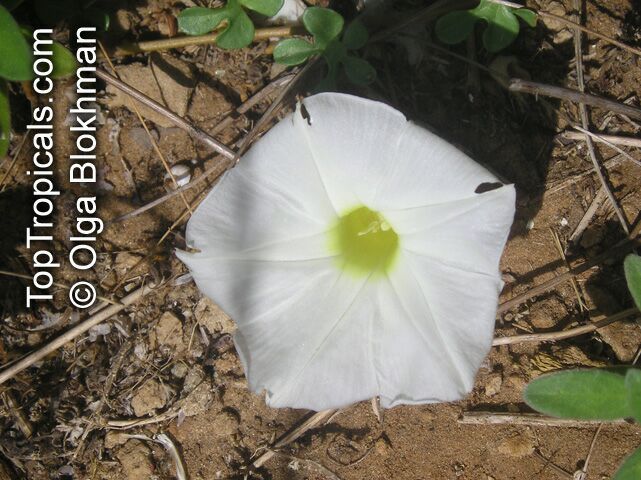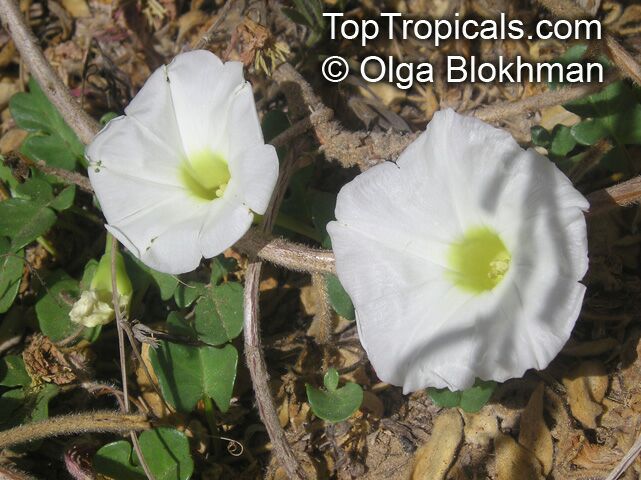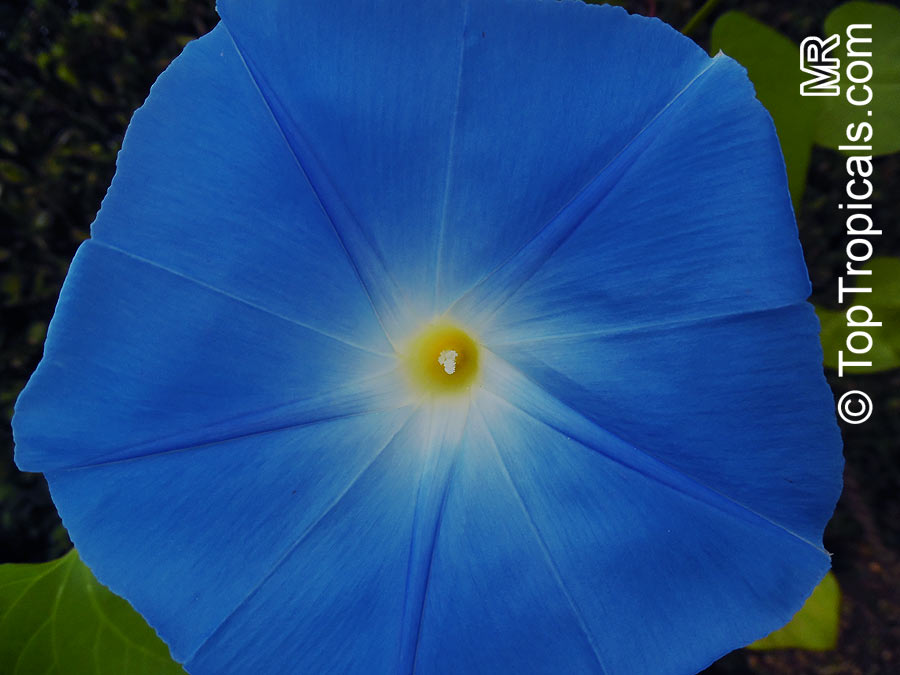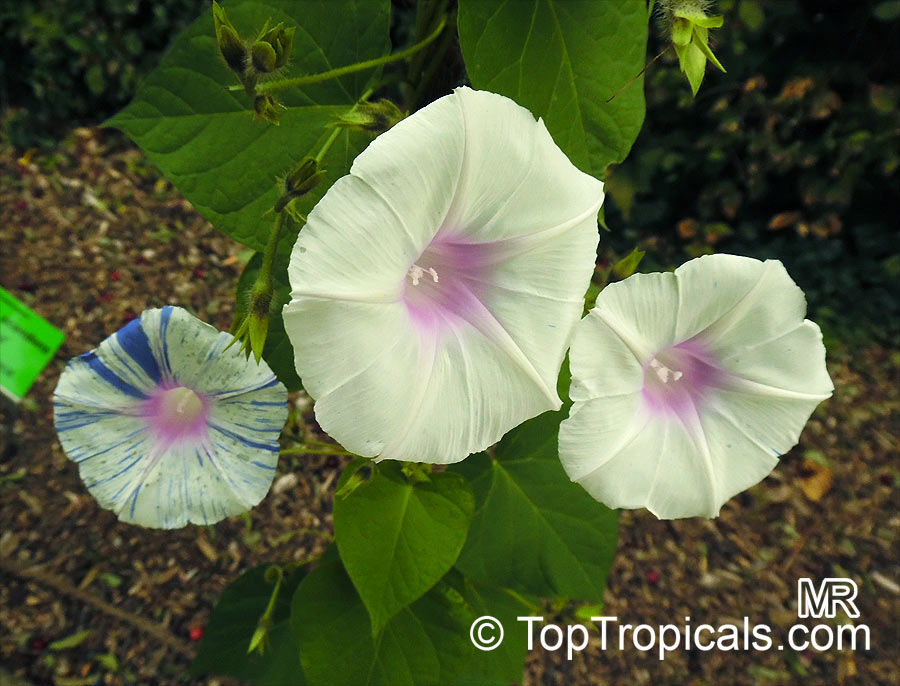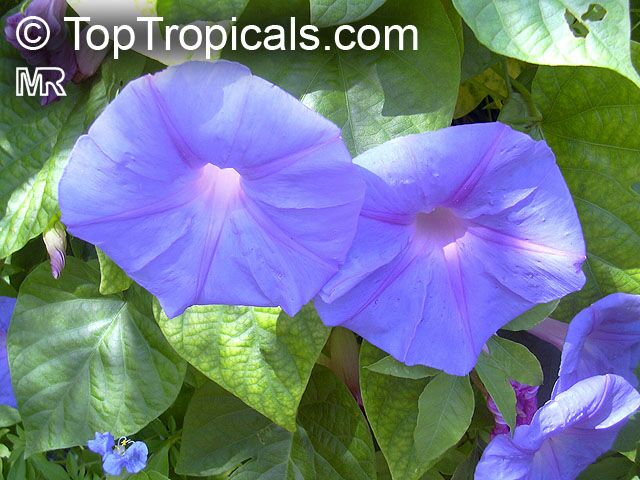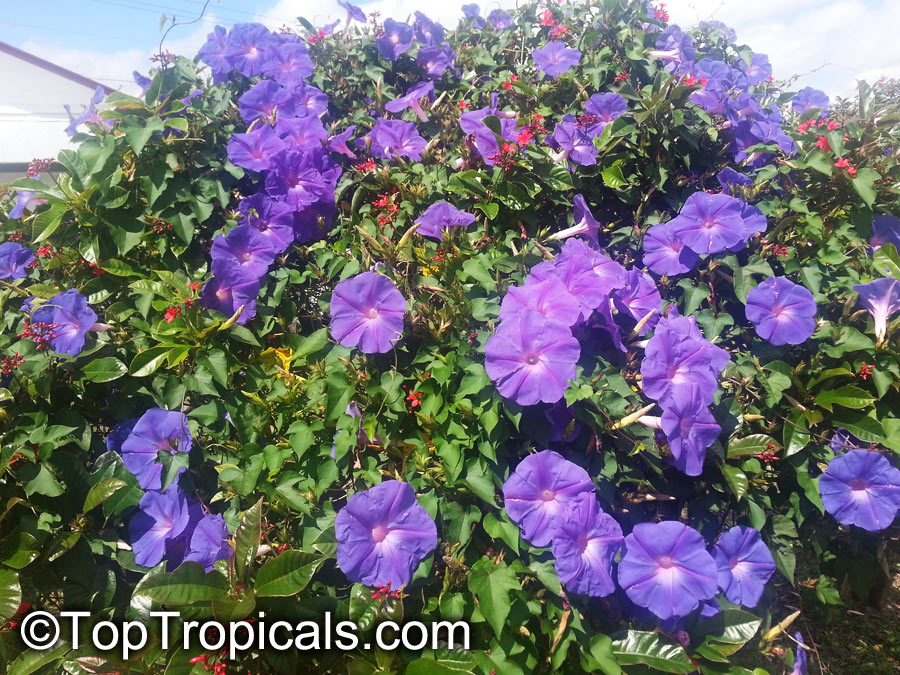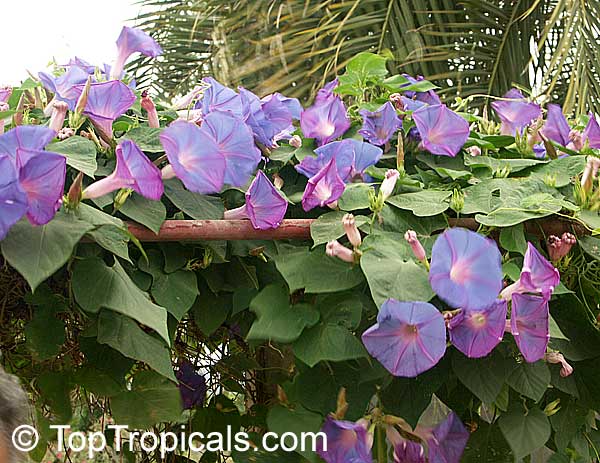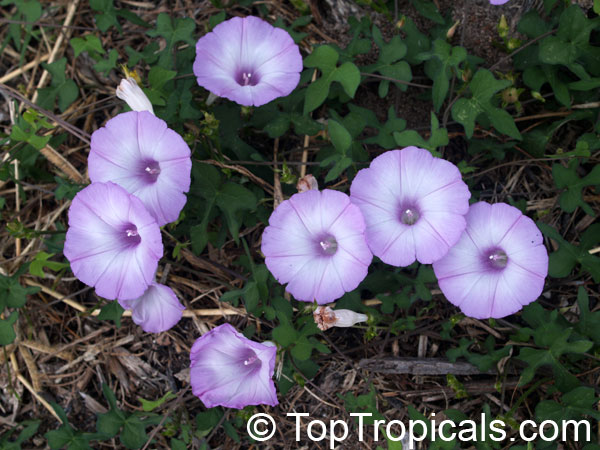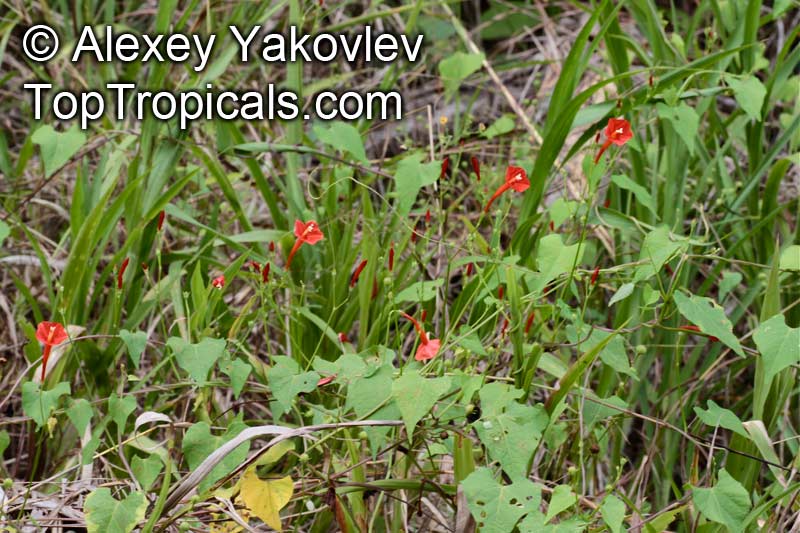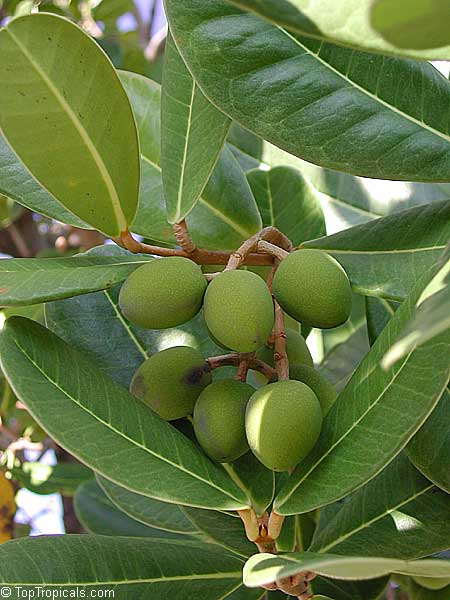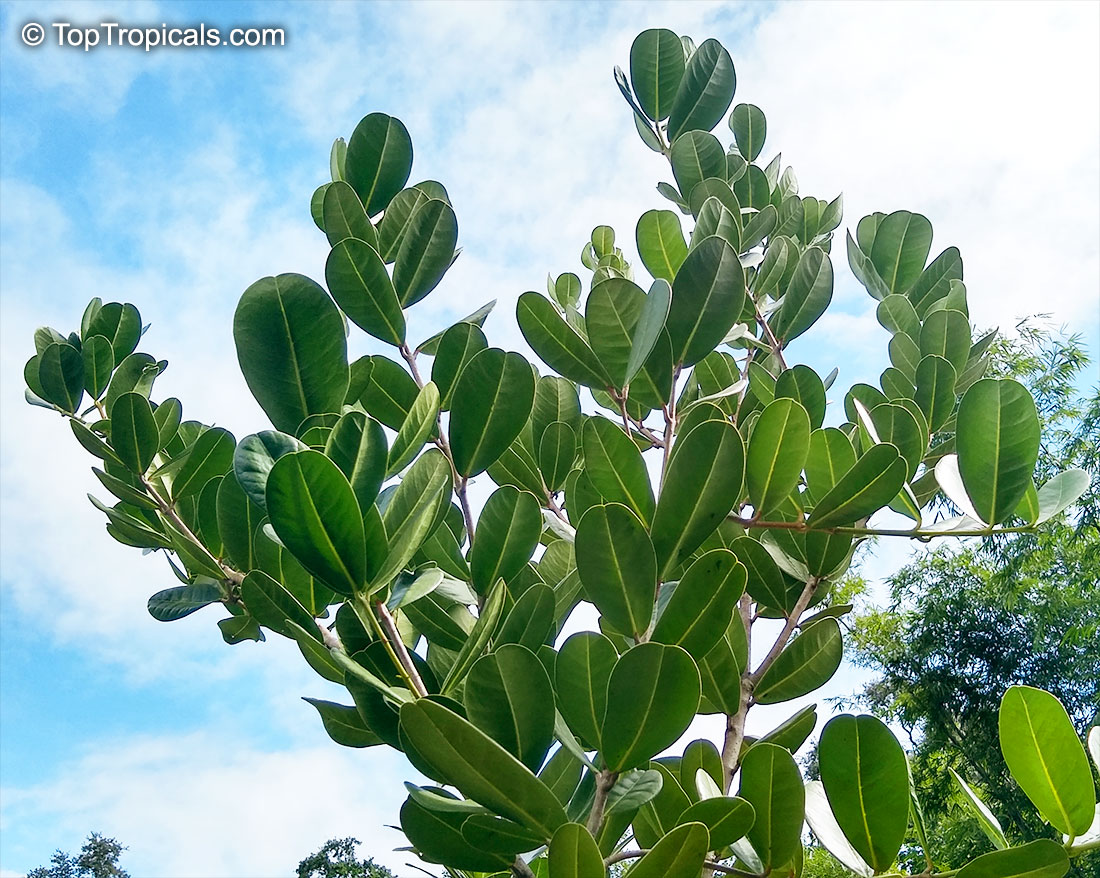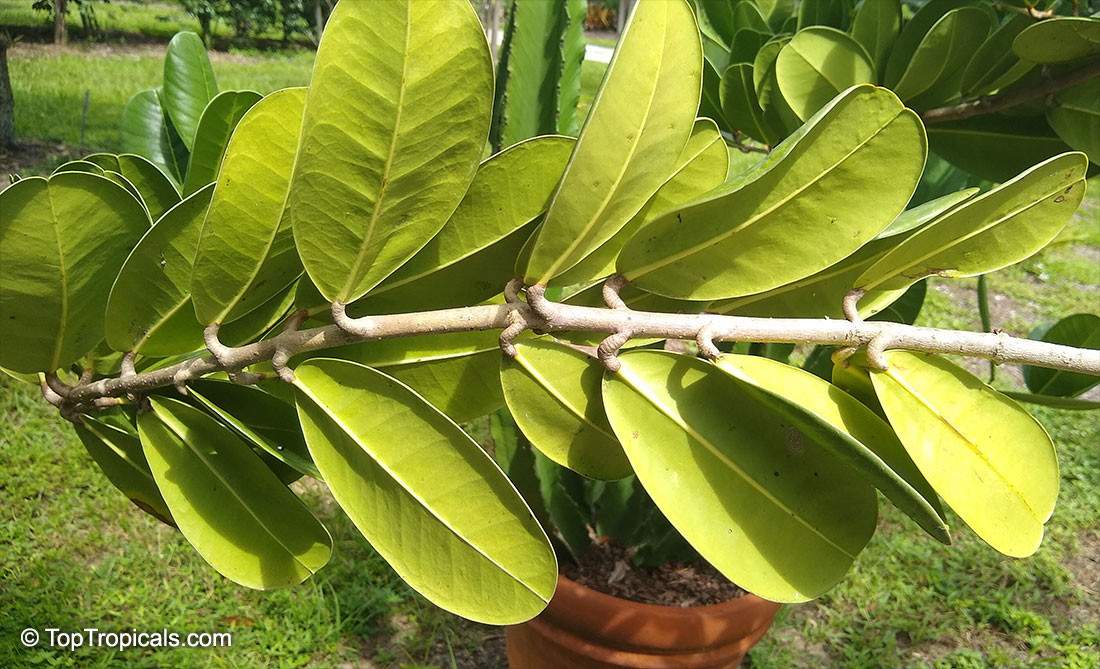Turbina - Search results
Top Tropicals Plant Encyclopedia
| Number of plants found: 5 |
Botanical names: Turbina holubii, Ipomoea holubii
Family: Convolvulaceae
Origin: South Africa






Turbina holubii, native to South Africa, is a small shrub that grows 2 to 5 feet in height. It is best suited to sunny or semi-shade sites with moderate water. The plant produces a caudex (thickened stem) that can reach 18 inches in diameter and has branches that can lay flat on the ground, reaching up to 80 inches. The buff-green to olive green leaves of Turbina holubii are deciduous and vary in shape from ovate to cordate to circular and oblong cordate. In the summer months this plant produces mauve or pink flowers, sometimes darker in the centre. On rare occasions, white flowered plants may be spotted.
Turbina holubii is suitable for growing outdoors within USDA hardiness zones 9 through 11. In colder climates, it is possible to grow Turbina holubii in a pot. The soil should be well-draining and it should be kept moderately moist. When potted, the caudex should not be allowed to become completely dry. The roots should be kept cool with the shade and the shrub should be kept in a relatively low light, sheltered area. Additionally, the plant should be kept away from strong winds, which can dry it out quickly, as well as protect it from frost. When exposed to temperatures below freezing, the foliage may become damaged and possibly die as a result. To prevent such damage, potted plants should be brought indoors and placed in a sunny location near a window during cooler months. With adequate warmth, light and care, Turbina holubii will bring a sparkling bloom to the home or garden.
Botanical names: Lippia turbinata, Lippia alba
Common names: Poleo, Juanilama, Pamporegano, Pitiona
Family: Verbenaceae
Origin: South America
Hardiness: 15°F










This medicinal plant related to Lantana is widely cultivated in Mexico as an ornamental for its aromatic foliage and beautiful flowers. The essential oil composition is unique to each plant, but may include piperitone, geranial, neral, caryophyllene, camphor, eucalyptol, limonene, and many others. The leaves are used for flavoring foods, such as mole sauces from Oaxaca, Mexico. The plant is used medicinally for its somatic, sedative, antidepressant, and analgesic properties.
Leaves and roots are used to make tea or syrup for cough relief and are said to relieve symptoms from anxiety to flatulence and hypertension.
Just brushing past it releases a wave of spicy, citrusy fragrance. It is an herb garden must-have. Fast-growing, drought-tough, flood-friendly, and practically indestructible - it thrives where other plants fail! Whether you re into healing herbs, culinary magic, or just want the best-smelling plant in your garden - this is it.
Botanical name: Dillenia sp.
Common name: Dengen
Family: Dilleniaceae
Origin: Southeast Asia





Species:
Dillenia celebica
Dillenia ochreata
Dillenia reticulata
Dillenia retusa
Dillenia turbinata
Botanical name: Ipomoea sp.
Common name: Morning glory
Family: Convolvulaceae
Origin: China












Ipomoea is a large genus of more than 500 species of the tropical and warm-temperate parts of both hemispheres, almost all of the species being climbing herbs or shrubs. A site in full sun and average, well-drained, evenly moist soil is ideal.
Species and varieties:
Botanical name: Noronhia emarginata
Common name: Madagascar olive
Family: Oleaceae
Origin: Madagascar





Noronhia emarginata is a versatile plant that is native to Madagascar. It grows as an evergreen shrub or small tree, about 3-15m tall. It has small but fragrant flowers with a four-lobed corolla, and the leaves are opposite, elliptical or obovate, up to 5 inches long.
The fruit of Noronhia emarginata is edible and has a number of health benefits. The fruits are globose to turbinate drupes, about 1 inch diameter, and bright yellow ripening to dark purple. They are rich in vitamins A, B and C, as well as other nutrients, and contain high amounts of dietary fiber.
Given the right conditions, Noronhia emarginata is a very easy plant to grow. It prefers full sun, but can tolerate part shade. It should be grown in well-drained soil that is acidic or alkaline, in clays, loam, and sand. It is drought-tolerant and highly salt-tolerant and can
In colder climates, Noronhia emarginata is hardy to temperatures at least as low as 30F. When grown in containers, take precaution to ensure the soil is properly drained and frost protection should be taken. It is advised to move the pot indoors when the temperature drops below freezing, to protect the roots.
Nothing found
